 By Ray Rivers By Ray Rivers
September 30th, 2016
BURLINGTON, ON
Mr. Trudeau went to the Big Apple, to the UN that is, and made another speech and made another splash. Come on, even those who didn’t vote for him have to be proud of Canada’s new PM capturing the hearts of the international crowd. But the Canadian media are getting a little bored with this international walk of fame.
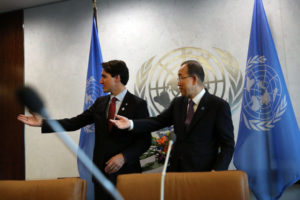 Prime Minister Justin Trudeau and Ban Ki Moon, Secretary of the United Nations, showing the world the way. Platitudes – that was the best they’d say about his speech. Canada promised something like 600 peacekeepers for Africa? But where in Africa? And did he seriously adapt Ronald Reagan’s sarcastic quip – I’m from Canada and I’m here to help? But the UN crowd soaked it up. After all with Canada being MIA at the UN for most of the last decade, a PM just showing up and offering support for the organization is worthy of their applause.
During last year’s campaign he made a habit of dropping bombshells. Legalizing weed, taxing the rich, transparent government, running a deficit, lifting the lot of First Nations, (finally) doing something about climate change and re-engaging with the global community. All of this has just whet the appetite of the media for even more sexy stuff, not platitudes. So Trudeau has only himself to blame.
 Try as he might Prime Minister Justin Trudeau just wasn’t able to bring Prince George around to a hand shake or a high five. Honeymoons don’t last forever. It hasn’t been a year since the election, but everybody wants their piece of the action in its entirety now, thank you very much. Grand Chief Stewart Philip, the leader of the Union of B.C. Indian Chiefs, refused to participate in a ceremony with the PM and the visiting royal family in a not-so-subtle protest. Undoubtedly, he has a point, and his are genuine grievances, including a concern that the federal government would approve a new natural gas pipeline to transport BC gas to Asian markets.
And sure enough that is exactly what has happened. Despite Mr. Trudeau’s public position on global climate change; despite his advocacy for Canada’s First Nations’ rights; and despite placing a moratorium on oil tanker traffic to help kill the highly controversial Northern Gateway oil sands pipeline, he has rubber-stamped a new natural gas pipeline, the Pacific Northwest LNG project.
 BC Premier Christy Clark just might prove to be the ally the Prime Minister needs and at the same time deliver real economic benefits to her people. damage to the environment – that’s a different issue – isn’t it? Oil is bad but gas is good? Well at least this gas project causes no heartburn to B.C. Premier Clark, as she anticipates the economic benefit from the scores of jobs it is promising. They used to call it clean energy. didn’t they? Some would argue that gas is a less damaging alternative, if used to replace coal for electricity generation. But it is a fossil fuel and therefore a greenhouse gas in either its raw state or during combustion.
So is Trudeau trying to have his cake and eat it as well? More than likely this is one of these grand compromises he sees in the general national interest. To get the energy-rich western part of this country onside with climate change plans he needs to give as well as take. He knows that inflexibility leads to deadlock. That is realpolitik.
 Former Prime Minister Stephen Harper was never able to get a pipeline into the ground – it just wasn’t the right time or was it a political inability to bring the right people together? And the pipeline, which is slated to be on-line by 2020, may never get built anyway, given the glut of gas on the markets, cheaper alternative sources, and the hoops and hurdles the government has placed on this project. One item on that list includes a limit on greenhouse gases, intended to force the most environmentally efficient delivery of the gas.
It’s a win-win for Trudeau. If the pipeline doesn’t get built, it won’t be his fault. And not having to account for all those greenhouse gases will give him great bragging rights the next time he goes before the UN crowd. He’ll be able to claim global leadership without any critics crying… platitudes.
Unlike Mr. Harper’s oil pipeline, there was substantial sign-on among many indigenous folks, though as noted above, not all. And the irony of it all is that, if the pipeline actually goes into action, Trudeau, the environmentalist, will have built more pipeline in his first year than Mr. Harper did in his entire nine years in office.
 Ray Rivers is an economist and author who writes weekly on federal and provincial issues, applying his 25 years of involvement with federal and provincial ministries. Rivers’ involvement in city matters led to his appointment as founding chair of Burlington’s Sustainable Development Committee. He was also a candidate in the 1995 provincial election Ray Rivers is an economist and author who writes weekly on federal and provincial issues, applying his 25 years of involvement with federal and provincial ministries. Rivers’ involvement in city matters led to his appointment as founding chair of Burlington’s Sustainable Development Committee. He was also a candidate in the 1995 provincial election
Background links:
When You Say Nothing at All – Trudeau at the UN –
More UN –
BC Chief and the Royals –
Trudeau Answers –
Transparent Supreme Court –
Pacific Northwest LNG –
Northern Gateway –
LNG Pipeline in Doubt –

 By Pepper Parr By Pepper Parr
September 26th, 2016
BURLINGTON, ON
 The following is a summary of the “New Directions” city council debated last week. The document in front of them was a draft that was received and filed. It will come back to city council in November, once the team putting the new transportation plan together has had a chance to absorb what council had to say during the three hour meeting. The following is a summary of the “New Directions” city council debated last week. The document in front of them was a draft that was received and filed. It will come back to city council in November, once the team putting the new transportation plan together has had a chance to absorb what council had to say during the three hour meeting.
We have added comments to each of the following eight new directions.
1 – Align Land Use & Transportation
Land – use decisions including density, mix of uses and quality of urban design contribute to a fabric that supports walking, biking and public transit. Fully integrate land – use and transportation decision-making at every level including policy-making and budgeting to ensure that future decisions facilitate a transportation network that supports intensification.
Two issues with this direction: wasn’t transportation considered when land use decisions were being made? This city council assumes the citizens have bought into the decision to intensify – don’t think that is the case.
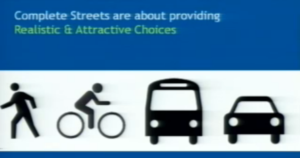 2 – Rethink Streets 2 – Rethink Streets
Abandon the “old” way of thinking, replace the term “road” with “street” and recognize that streets do more than just move automobiles, they are “people places” and have the potential to be key assets in the civic life of our city.
Very true – we are stuck in some old way thinking but changing road to street is not going to do it. If Road is out of tune with the times what are Lines – Guelph Line, Walkers Line – they are part of the city’s genealogy.
Streets are people places but there has to be a reason for people to be on the street
3 – Reprioritize Mobility Choices
Reprioritize decision – making in order to support intensification and allow active and sustainable mobility choices to “catch – up” to the auto and reach an ambitious level of attractiveness in order to realize a true multi-modal city.
This council has committed itself to upgrading its infrastructure and had a ten year + plan to do just that – it will be like pulling teeth from a hen to get the majority to change.
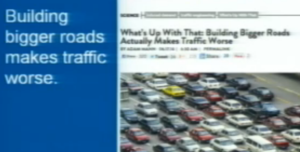 The image was lifted from a presentation given to city council last week 4 – No New Car Capacity
Intensification with further car – oriented design will only result in continued auto-dependency, expensive infrastructure and an overall failure. Confirm that through the intensification strategy, mobility will be facilitated not through increased auto capacity, but by allocating existing space and budget for walking, biking and public transit. Strategic reallocation of existing car capacity for active and sustainable mobility choices.
This is what city council did back in the days when the Orchard was being developed. Not much was made in the way of allowances for parking because people were not going to use cars – there would be a realistic transit system. Council now spends hours discussing with irate citizens whether and where they should be able to park their cars – all three or four of them.
There is a large housing development being built on the North West corner of Walkers Line and Dundas – is anyone suggesting that there be no car capacity in that community? No at the price point they are asking for a single detached home.
5 – Make Walking Delightful
Change the culture, decision-making, policy and budget to make the city rapidly more walkable – achieve the strategic goal of becoming a leader in walkability.
A city council doesn’t have the right to change the culture of a city unless they have a mandate to do so. The culture change is something that is being sprung on people with little of any input from the public so far. There are plans for public input in November – nothing concrete yet.
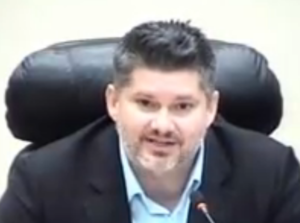 Brent Toderian, planning consultant hired by the city to guide the planning and transportation departments on new directions. He told Council they were going in the right direction. 6 – Make Biking Delightful
Move in a timely way to create a minimum network of safe, connected bike infrastructure with continued network expansion over time. Emphasis on initiatives to build an urban biking culture and achieve the “Gold Standard” for cycling.
Good luck on this one – cycling to work is something a few will do regularly. I suspect cycling is a recreational event for most people in Burlington.
7 – Make Transit Delightful
Support significant and strategic improvement of transit coverage, service and experience in order improve the branding of public transit as an attractive mobility option.
Develop policy to support levels of density that will translate to increased ridership.
There are literally hundreds that would settle for a decent transit schedule – they would scoff at the idea of rising a bus as being delightful.
8 – “Walk the Talk”
Dedicate energy and attention to ensuring that the plan is followed – through. Strategically position the city for successful implementation of the Plan and align budget allocations to the new mode hierarchy.
Great idea – just make sure that there is real public input – not a plan that is put out with the public expected to accept something that has already been decided.
Genuine public education and genuine public involvement.
There is a lot more public discussion needed on this subject – my colleague Joan Little suggests there won’t be a single safe seat on city council if this goes much further. It is going to go a lot further – the city manager and the planner are intellectually committed to this. Council – wait until they get a sense of what the backlash is likely to be before deciding on what they will do.
In the past they have changed bus routes when as little as three people complained.
Related article
Spectator columnist suggests every council seat could be at risk with some of these ideas.

 By Joan Little By Joan Little
September 23, 2016
BURLINGTON, ON
The following piece was lifted from the Hamilton Spectator where my colleague Joan Little writes a semi-weekly column.
If Burlington doesn’t handle this file very, very carefully, there won’t be a safe seat on council in 2018.
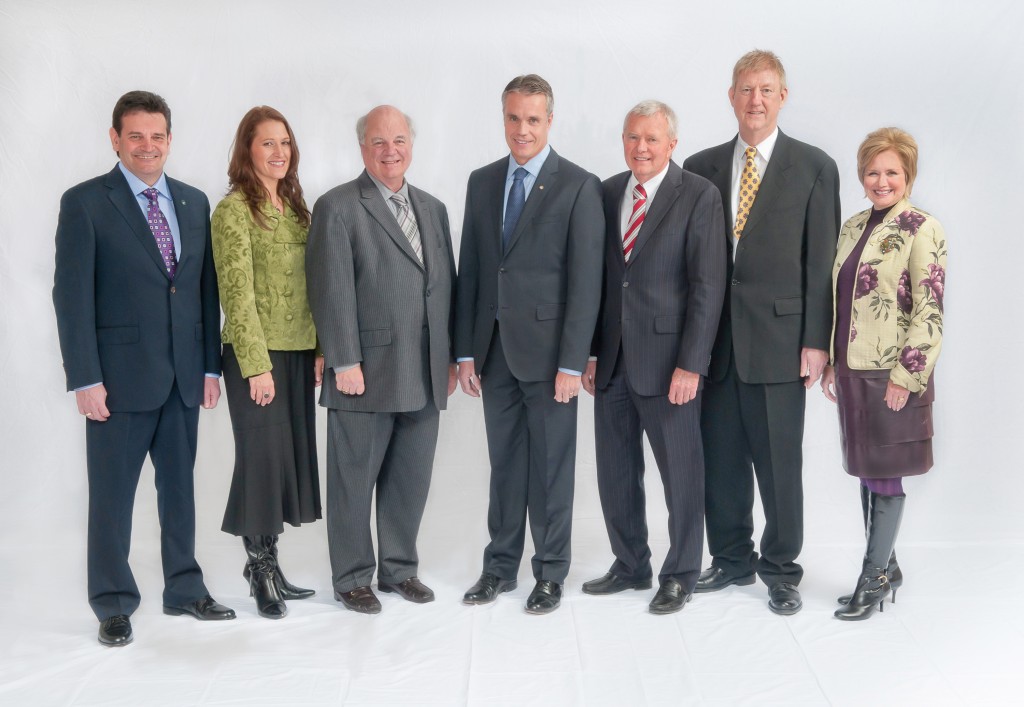 Spectator columnist Joan Little argues that every seat on council is at risk if the transportation file is mismanaged. Is it possible to lose all of them in one fell swoop? The issue is transportation planning. Sounds like a nothing issue, but if it isn’t carefully presented, look for a wholesale change in the 2018 election.
On Tuesday, Brent Toderian, a Vancouver urban planner, presented his “New Directions” transportation plan recommendations. The committee voted to receive and file the report. He will edit it for more clarity in preparation for public consultation in January.
The report stated that as Burlington intensifies, growing up instead of out, it has to de-emphasize vehicle use, and stress other modes of travel to “Grow Bold.”
Discussion centred mainly on modes of transportation. Toderian’s report emphasized walking and biking, followed by public transit, then car-sharing. Said he, “Burlington can be the first city to grow up successfully,” stressing the high dollar cost, time and congestion of continuing as we are.
One recommendation was to stop providing new street capacity for cars, and to make walking, biking and public transit delightful. Mayor Rick Goldring agreed that we don’t want the Region dictating Burlington arterial road widenings, and we need a strong local policy. Rick Craven pointed out that we did not need Waterdown Road widened. It is necessitated by Waterdown’s high growth.
Toderian said the aim is to use cars less frequently. Few will dispose of them. Throughout his presentation he repeatedly warned councillors to expect strong public push-back. Funny, I thought councils were supposed to listen to public feedback.
John Taylor asked about the transition from today to full implementation, because it will take decades to get there, and was told the actual plan would address that. He was skeptical about big spending on transit, noting that in spite of investments, ridership has been static for 20 years.
 Councillor Meed Ward argued that people drive because they gave to. The most astute comments came from Marianne Meed Ward. She said the big issue is why people drive. One reason is to get to work. Many commute to Toronto and elsewhere where Go Transit isn’t handy. And how could a Ford worker get to Ford without a car?
She recalled a transit group’s challenge to councillors to take transit for a week, and noted that her 15-minute drive to the Region took over two hours by transit, and required two transfers (not to mention the cost). We need more jobs where people live.
She said people drive kids to school because they don’t want them biking, and school busing is often inconvenient. Shopping? Downtown, there are probably 20 spas, but only one grocery store, and if she needed a hammer, her nearest store is Canadian Tire.
Our planning is wrong, she said. Why, for instance is a huge store like Walmart allowed to build one-storey stores? Immediately adjacent on Fairview are the six multi-storey Paradigm condos. Wouldn’t it be better to allow one above Walmart? She also commented that a supermarket could not go downtown because of zoning.
During the session, councillors commented on the outrage they are fielding about the “road diet” pilot project for bike lanes on New Street, eliminating a driving lane. Few cyclists use them, but Toderian explained that until bike lanes form part of a network, they won’t. He stated that when Vancouver’s first lanes appeared, few used them, but now that there’s a network, they’re popular. (Vancouver doesn’t have winter!) Jack Dennison cycled along New, thoroughly enjoyed it, and felt safe. City manager James Ridge said a network would have to be planned shortly.
Craven claimed this idea isn’t new. The revamped Plains Road has bike lanes, intercity transit, and is pedestrian-friendly. Further, he said, underground parking costs developers about $40,000 per space, which buyers pay for.
There were budgetary questions, to which Toderian responded that you have to prioritize spending.
It sounds logical, but show me the timing, costs and public acceptance of this big change.
With Burlington having such high incomes and per capita car ownership, expect questions.
 Joan Little is a member of the Niagara Escarpment Commission. Previous to her current appointment she was a commissioner from 1986 to 1993, and chair from 1993 to1996. She was a member of Burlington Council and Halton Regional Council between 1974 and 1988, and an active board member of Conservation Halton from 1976 to 1995. Following her council retirement she served on the Joseph Brant Memorial Hospital Board, which she left in 1993 to assume the Chair of the NEC. She is a regular freelance columnist on Burlington/Halton issues in the Hamilton Spectator. Joan Little is a member of the Niagara Escarpment Commission. Previous to her current appointment she was a commissioner from 1986 to 1993, and chair from 1993 to1996. She was a member of Burlington Council and Halton Regional Council between 1974 and 1988, and an active board member of Conservation Halton from 1976 to 1995. Following her council retirement she served on the Joseph Brant Memorial Hospital Board, which she left in 1993 to assume the Chair of the NEC. She is a regular freelance columnist on Burlington/Halton issues in the Hamilton Spectator.

 By Ray Rivers By Ray Rivers
September 23, 2016
BURLINGTON, ON
Imagine a Canada where after a lifetime of working everyone could look forward to receiving a guaranteed two percent of the average salary for every year they worked in the form of a pension.
Working for 30 years would earn a pensioner 60% of that old salary or wage. That is what government workers, educators and those who still have defined-benefit company pensions receive. But that last category, those with a defined-benefit private company pension, is getting smaller.
“A stake in the heart of company pensions.” That is how one news outlet labelled the agreement reached between General Motors and its employees’ union Unifor. In exchange for a commitment to expand auto jobs in Ontario, GM will discontinue it’s old lifetime defined-benefit pension for new workers. Low interest rates, which have handicapped earnings for pension plans, is only part of the reason GM made getting rid of pension plans its priority.
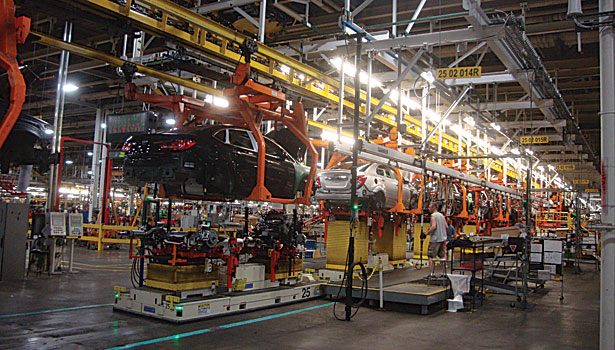 Modern automotive production lines call for a highly skilled labour force – who should be entitled to fair pension plans. In our modern globalized world corporate entities come and go, and can be gone long before all their former employees have departed, for heaven or that other place, and are still claiming the lifetime pension obligations they are entitled to. Just look at Hamilton’s US Steel company, formerly Stelco, which had to be bailed out by Ontario taxpayers. The US corporate giant, snubbed its legal commitment to keep jobs in Hamilton smack in Mr. Harper’s face. And then it walked away from its responsibilities to its pensioners, expecting the Ontario government to pick up the pieces.
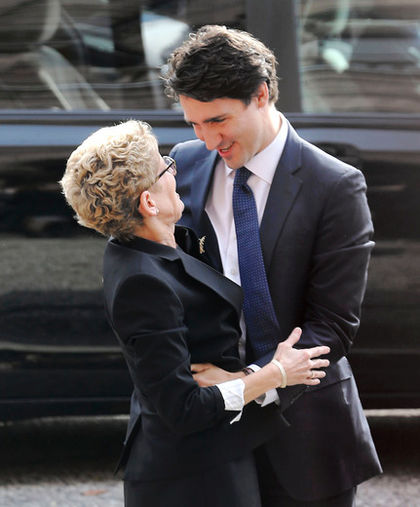 Canada Pension Plan enhancement was a Trudeau election promise – Premier Wynne made sure he stuck to it and that the other provinces came around as well. It is no wonder Premier Wynne was so keen on expanding public pensions for the average working person. And she takes some credit for catalyzing Canada’s leaders into enhancing the Canada Pension Plan (CPP). The CPP payments will move up to one third of a person’s former working income (from a quarter) under the recent federal/provincial agreement. Of course CPP enhancement was a Trudeau election promise as well, so it is questionable whether the province really needed to expend the $70 million it did, mainly promoting a program it expected/hoped would never see the light of day.
A national universal pension program is the ultimate in pension evolution, particularly in a more globalized work economy. The days of the paternalistic company, managing pension plans and other aspects of their employees lives, are so yesterday. In this vein the former Harper government may have been uncharacteristically progressive, mulling a shift of federal pensions to the defined-contribution model. However, his reluctance to even budge the CPP upwards at the same time argues that he was just being mean-hearted, again.
These so-called defined contribution plans are not anything like a substitute for a guaranteed pension, as one heads into the down-days of one’s life. For one thing people become more risk adverse as the the sands of time trickle down that hour-glass. And there is nothing like knowing you’ll be able to budget for that next trip to see the grandkids in Calgary when you are seventy-five years old. It’s the pensioner’s money except that the financial institution contracted to prepare and hold the plan is not doing this out of the goodness of its heart – like everyone who touches gold expect some of it to rub off on its hands.
 Figuring out what you are going to actually have when retire isn’t supposed to be as difficult as it appears to be. These defined-contribution plans gobble up retirement tax-credit space. And since they are employee contributory, in most case, they use up money they might use to buy other investments.
Defined-contribution is an awkward and unfortunate name since these financial instruments are nothing more than an RRSP bought on your behalf by your company.
And the truth is that RRSPs can turn out to be a curse, as many pensioners with respectable incomes post-retirement are finding. Those forced to cash in their RRIFs seem to paying more taxes now than when they were actually employed.
Someone in the Department of Finance should run the numbers. I’ll bet that eliminating RRSPs and raising the CPP to an even more respectable level might just net-out financially. But that would mean making our tax system less complicated. And what about the pensionable earnings of tax accountants and lawyers who helped create this morass?
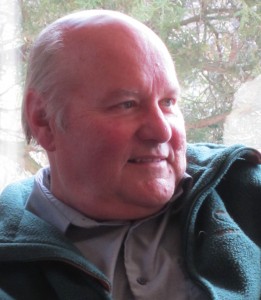 Ray Rivers is an economist and author who writes weekly on federal and provincial issues, applying his 25 years of involvement with federal and provincial ministries. Rivers’ involvement in city matters led to his appointment as founding chair of Burlington’s Sustainable Development Committee. He has been a candidate in a past provincial election. Ray Rivers is an economist and author who writes weekly on federal and provincial issues, applying his 25 years of involvement with federal and provincial ministries. Rivers’ involvement in city matters led to his appointment as founding chair of Burlington’s Sustainable Development Committee. He has been a candidate in a past provincial election.
Background links:
GM/Unifor –
More GM – Even More GM –
Defined Contribution – Stelco Bailout –
Defined Benefit Plans –

 By Ray Rivers By Ray Rivers
September 8th, 2016
BURLINGTON, ON
Ontario’s Auditor (AG) had stated that electricity costs in Ontario exceeded the ‘market price’ by $37 billion, almost $4 billion a year. What on earth can that mean? Is this evidence that the provincial government is wasting our money?
Turns out the so-called ‘market price’ is a pretty imperfect instrument, an artificial value, given that the big sellers, OPG and Hydro One still dominate Ontario’s energy scene. And since the hydro and nuclear installations have already been paid-for or are part of the massive historical debt, these fixed cost assets don’t even figure into this market price.
Think of Ford Motors selling its cars for only the cost of the steel and labour that goes into making them because somebody else has paid for building and running its car plants. If the value of the fixed costs and the contracts securing long term energy supply were included in Ontario’s energy system, it would look more like a real market, the bids making up the ‘market price” would be higher, and the $37 billion residual would be much less.
That $37 billion comes with an unfortunate name, Global Adjustment fee – a catch-all phrase, a residual that covers the difference between those imperfect market prices and all the other payments the power companies need in order to stay in business and keep the electrons flowing and the lights on. Many of these costs are based on contracts, some of which go back in time to the break-up of Ontario Hydro back in the late nineties.
The most problematic of the contracts for the Auditor General were the open-ended ones, where the generator can sell all the power produced, even if there is a glut in the system – thus the criticism about paying energy companies to dump their power and selling at a loss. These contracts were either written in the days when energy shortages seemed more inevitable than gluts, or were designed for smaller generators who, for simplicity, are constrained by the capacity of their technology – rather than by market demand.
 Ontario’s electric transmission system, along with railway lines cut right through the city. But even with the global adjustment added in, Ontario’s energy situation is hardly a calamity. In fact the overall price of electricity in Ontario, including global adjustment, is not out of whack with that south of the border after exchange rates, where even more competitive electricity markets do exist and the fixed costs are included. And despite the steady rise in Ontario’s electricity bills, Los Angeles, Boston and New York residents pay more.
 Coal mine – Ontario has at least stopped generating turbines that produce electricity through the burning of coal. And the kicker – the Auditor almost ignored that Ontario has stopped burning cheap coal, unlike those operators in some other parts of Canada and stateside. Closing down the single largest source of greenhouse gases in the entire country should be worth at least a positive footnote. And in that vein it was unfair of her (the AG) to blame Hydro One for its faltering five year transmission system reliability, given that huge 2013 ice storm, the biggest in history which shut off power for over a week in some cases, was itself a consequence of our changing climate.
The right-wing media, and their stable of anti-renewable energy neocons, had been grumbling about energy management long before the AG gave her report, but she has emboldened them with her misleading and lopsided reporting. Most recently there was another letter in the National Post from a one of the solar power, advocates, lambasting the very program that butters his bread. He thinks there is too much money going into building renewable energy capacity, except for the solar producers he represents, that is.
So is the Province acquiring too much electricity generating capacity and is that why energy rates keep rising? It’s more complicated than that. But having slain the coal dragon, if the province wants to avoid simply substituting gas emissions for coal emissions it needs to strengthen its renewable component. That is at least until it has found some way to store the excess energy which gets produced on a sunny and windy day, such as converting that energy to hydrogen gas, to be used in stand-by hydrogen electric fuel cells.
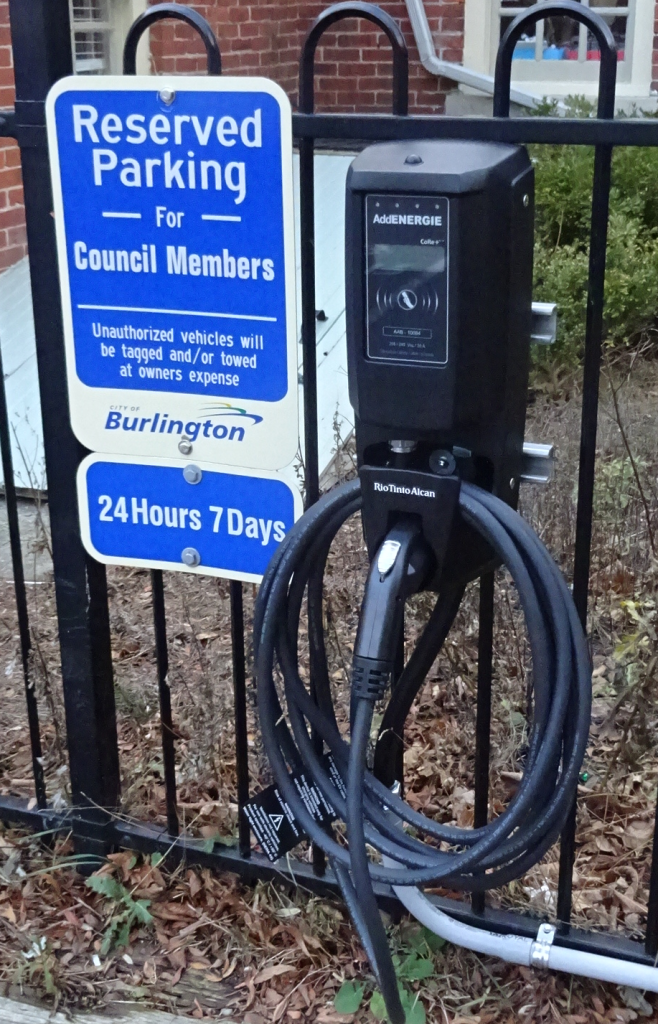 Burlington Hydro leased an electric car for city Councillors to use – they provided the electricity as well. The data collected was needed to get some sense as to what average usage would be. And if electric vehicles (EV) really capture the imagination of the motoring public, the demand for electrical vehicle plug-ins could be exploding in the near future – so better to plan for an excess rather than a shortage of power. By the way, higher energy prices haven’t been all bad. They have provided a huge incentive to develop and implement more energy-saving technology, e.g. LED bulbs – which in turn help to lower our bills.
It’s true that there have been mistakes that have helped push our rates up. Of course there are the billion dollar gas plant cancellations.
Then, as can be found in the AG’s report, the multi-million dollar energy conservation program is almost redundant now. And the number of agencies and all those bureaucrats with their fingers in the pie are still too many. The feed-in-tariffs for renewables are still too high and the open-ended contracts need to be curbed. And off-shore wind power, the most efficient way to make electricity without killing birds, is not even allowed.
 Quebec is blessed with rivers that can be dammed up and used to generate electricity – much of which they sell into the United States. Quebec has the lowest energy rates in Canada, since its source is virtually all hydro (water) power and it is managed by a government monopoly, Quebec Hydro, the way Ontario used to be. Mike Harris broke Ontario Hydro forever and we have been paying the cost of that mistake since. The Premier says she believes that electric cars must replace todays many gas-guzzlers, yet relatively high electricity prices mitigate against that. Perhaps that is the reason Ontario lags its neighbour Quebec in EV sales. What else would account for EV sales in that province being double those in Ontario on a per-capita basis?
Finally, the Auditor General. $37 billion is a mischievous red herring and she should have known better. It could be reduced but it is the cost of doing business in Ontario’s imperfectly decentralized market for electricity. Her report reads more like a series of sound bites and gripes intended to feed the opposition parties, rather than to constructively assist the energy sector to do a better job.
From her report it is not clear that she even understands Ontario’s energy system, let alone how it came to be this way or where it is going. I am not doubting her competence to perform a financial audit, but an operational or program audit requires more research and analysis and a lot more insight. Frankly I think we deserve better.
 Ray Rivers Ray Rivers is an economist and author who writes weekly on federal and provincial issues, applying his 25 years of involvement with federal and provincial ministries. Rivers’ involvement in city matters led to his appointment as founding chair of Burlington’s Sustainable Development Committee. He was also a candidate in the 1995 provincial election
Background links:
Ice Storm – Solar Guy’s Gripe – Global Adjustment – More Global Adjustment –
Even More Global – Finally More Global – EV Sales – US Energy Prices – More US Electricity –

 By Pepper Parr By Pepper Parr
September 3rd, 2016
BURLINGTON, ON
If it looks too good to be true – it probably isn’t true.
Dang!
 Pleasant enough assortment. There I was getting ready try out the different supermarkets and see what their wine offerings were going to be – the Ministry of Finance did say we were going to be able to buy wine in Supermarkets on October 28th. They provided a list of the supermarkets who were going to be in the wine biz.
 Loblaws was on the list. Fortinos is a part of the Loblaws operation – just a different brand name. We wanted to know if Fortinos would be selling wine and we asked this question: Loblaws was on the list. Fortinos is a part of the Loblaws operation – just a different brand name. We wanted to know if Fortinos would be selling wine and we asked this question:
“Can we assume that if a supermarket chain is part of the list of locations that can begin selling wine in October that any location in the chain can sell wine products?”
The response: “That is not correct. I am just in a meeting but let me get you some expanded info.”
 Well it turns out it isn’t quite that simple. When we asked for a little more in the way of detail here is what we got back. Well it turns out it isn’t quite that simple. When we asked for a little more in the way of detail here is what we got back.
“Today’s announcement identified the successful respondents to the Request for Bids (RFB) held by the LCBO for the sale of wine in grocery stores, later this fall. The successful grocers will now move on to the next stage of the process, which is to apply to have their individual  store locations inspected and authorized by the Alcohol Gaming Commission of Ontario (AGCO), and then enter in to the necessary wholesale supply agreements with the LCBO. We will provide further updates about the authorizations and individual store locations once the RFB process is complete in late October.” store locations inspected and authorized by the Alcohol Gaming Commission of Ontario (AGCO), and then enter in to the necessary wholesale supply agreements with the LCBO. We will provide further updates about the authorizations and individual store locations once the RFB process is complete in late October.”
I think we are going to be making trips to the LCBO for a while yet.

 By Ray Rivers By Ray Rivers
September 1, 2016
MOUNTSBERG, ON
It could be the culmination of all that pollution from (former) Stelco and the other steel company taking its toll on the brain cells of some Hamilton City Councilors.
Or it might be the fact that this city is still almost ungovernable, perhaps even more so after over a decade of forced amalgamation. Or perhaps it is just small-minded political parochialism and old-style partisan politics getting in the way. But Hamilton is on the cusp of saying NO to a billion dollars.
The Province has offered to build a billion dollar light rapid transit system through the downtown core of this rust-belt city at no direct cost to Hamilton. But some Councilors are playing politics.
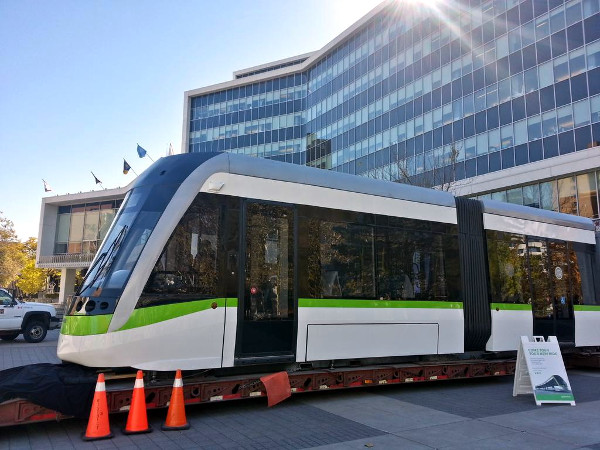 A model of the proposed LRT was placed outside Hamilton city hall for a number of months. Some Councilors who don’t have constituents in the downtown core are looking for a political payoff in order to vote yes to the billion dollar transit gift. That is one of the games in municipal politics, the parochial politician who won’t support anything that benefits other parts of the city unless he/she also gets something in return.
This is a Liberal provincial government making the one-time offer, and it certainly seems that those who support, or once sought election for, another political party are saying no thanks. Is it that they’d rather see Hamiltonians lose the only realistic hope for a rapid transit system in a long time, than see the Wynne government get the credit?
There is a lot of spin by the naysayers. What if the construction costs more than a billion? What if the McMaster University terminus moves and that demand dries up? How will emergency vehicles cross the elevated tracks? Won’t self-driving electric cars and buses make rapid transit obsolete?
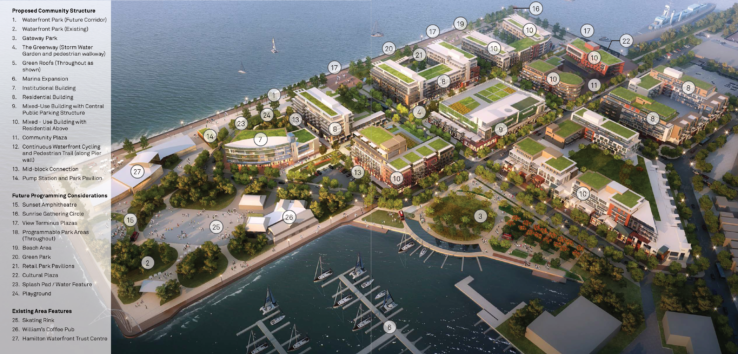 There are plans to develop Pier 8 – putting housing where shipping sheds now stand in the north end of the city. GO train station is within walking distance. Not that building a high speed transit line is without hiccups and annoyances. The line under construction in Kitchener has taken longer than expected and is very disruptive to local residents and businesses. Still the public there have not lost patience nor passion, knowing that the pain is worth the gain.
They understand how the subway in Toronto grew the downtown economy of that city, preventing its decline into the ’60/70’s rust belt which plagued other cities in the Great Lakes basin, including Hamilton. No economic studies have shown a downside for the investment from Hamilton’s perspective. And just about everyone expects that mass transit will provide a much needed kick-start to revitalizing a commercially depleted and desperate downtown Hamilton.
I lived in Vancouver when the Sky Train came into operation. Rapid transit has proven to be one of the best things that ever happened to that city, which would otherwise be choking on the exhaust fumes of its own success, more than it is. Unfortunately Hamilton’s dim-sighted politicians decided against a similar system when it was offered by the Davis government back in the day. Concerns over commuters peeking into residents’ backyards apparently put that project into the waste bin of history.
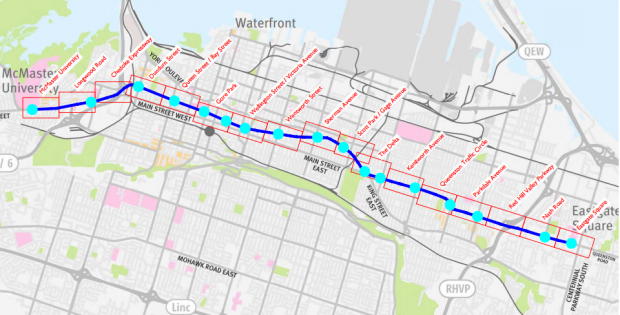 Is it just small-minded political parochialism and old-style partisan politics having Hamilton say NO to a $Billion for an LRT line? I wrote about the last municipal election in this space back in 2014. One of the biggest challenges seen by the mayoralty contestants was getting independent minded Councilors to work as if they were in a team – to focus on what is good for the city rather than just their own ward or their own political ambitions.
Despite his best intentions, that doesn’t seem to be working for Mayor Eisenberger. If Hamilton’s politicians are so determined to only look after their own interests, why were they so enthusiastic about making the city one big community? Perhaps the answer lies in eliminating the ward system and electing the entire council at large.
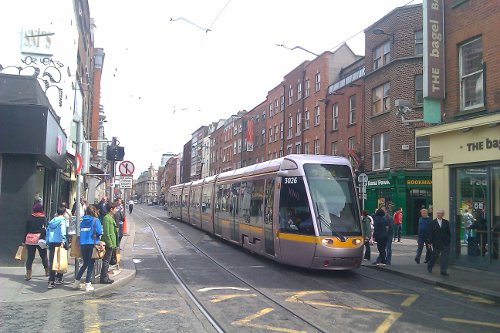 Development has always followed transit – will the planned LRT create a new Hamilton? Of course that billion dollars offered by the Province is not really free. Provincial grants are made up of all our money, collected mainly through provincial income and sales taxes – and there is only ever one taxpayer. So the cost-benefit question is whether there will be at least a billion dollars of increased net economic activity. That seems to be the expectation, and nobody is arguing that this infrastructure investment will be a waste of taxpayer money.
So what is stopping the politicians from getting to yes? The vote is next scheduled for September and I’ll be watching to report on the decision. Are our municipal politicians prepared only to put their particular interests ahead of the general welfare of the city, or do they really believe in the new Hamilton?
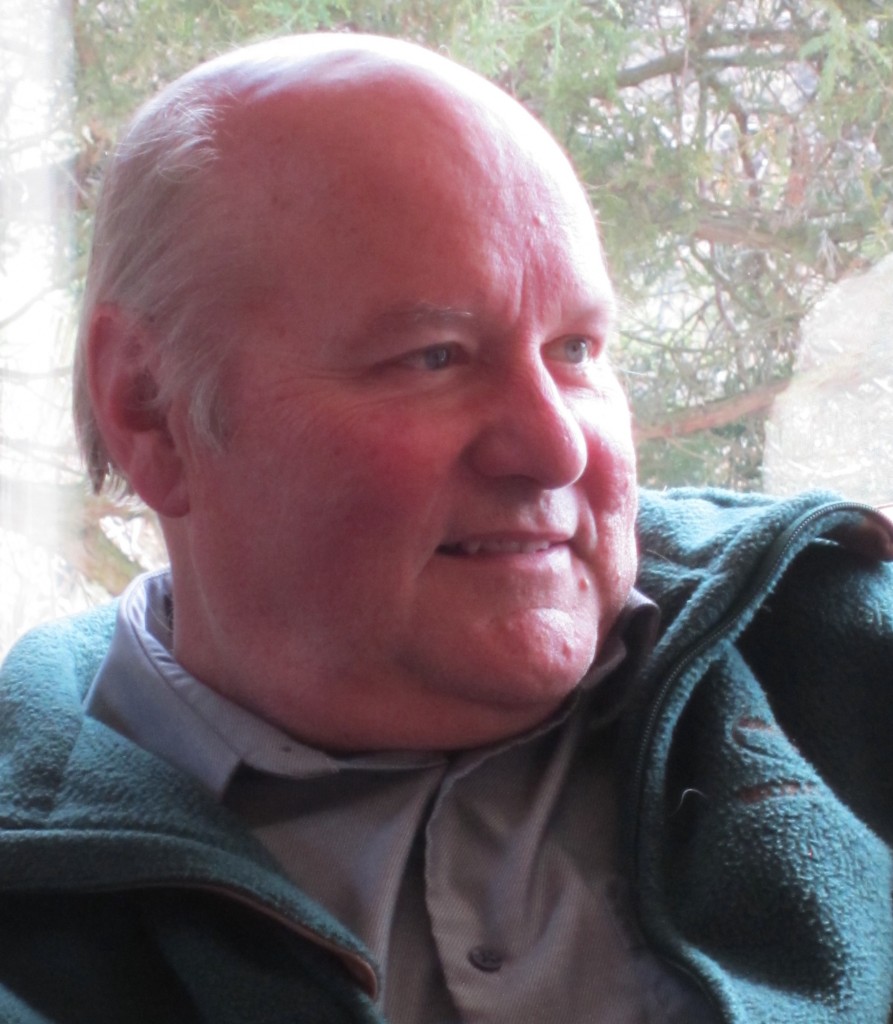 Ray Rivers Ray Rivers is an economist and author who writes weekly on federal and provincial issues, applying his 25 years of involvement with federal and provincial ministries. Rivers’ involvement in city matters led to his appointment as founding chair of Burlington’s Sustainable Development Committee. He was also a candidate in the 1995 provincial election.
Editor’s note: Why would a Burlington paper publish an opinion piece about Hamilton? Because Hamilton is going to be the economic engine that pulls Burlington along with it and knowing what that engine is doing and where it is going tells us where we will end up. The parochialism that exists in Hamilton also exists in Burlington.
Background Links:
Rust Belt – LRT – 10 Questions – Vote Postponed
Waterloo Experience – HSR – Gazette article Oct 2014 –

Burlington’s Member of Parliament Karina Gould will be leading a public consultation on Electoral Reform at the Mainway Recreation centre in the auditorium on Saturday September 10th at 12:30.
She wants to hear what her community has to say about the changes Justin Trudeau promised to deliver in the way of electoral reform. The Gazette is publishing a three part series on what the election reform options are.
This is the first of the three parts.
 By Jay Fallis By Jay Fallis
August 30th, 2016
BURLINGTON, ON
If you have been following politics recently you may know that there is a debate currently waging over what type of electoral system Canada should use for the next election. As someone who studied electoral reform I thought it may be valuable to give readers a taste of why our current First Past the Post system needs to be changed. Although there are advantages to First Past the Post: strong regional representation, a simple ballot, an efficient counting method; there are many significant disadvantages.
First and foremost, the number of voters that are represented by FPTP is far below that of the average system. In elections past, support from just over a third of the country has given a party a mandate with 100% of the power. In fact, in the most recent election, despite a landslide victory, the Liberal Party only amassed approximately 39.5% of support from the electorate according to Elections Canada. That means that essentially 60.5% of Canadian voters in 2015 had no say in how their country is going to be governed over the next term.
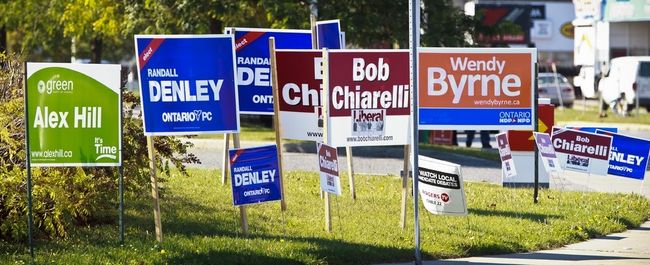 There is seldom a lack of candidates – deciding how we choose the winner is what the public has been asked to voice their views on. This problem is also evident in riding results. Each federal election, there are dozens of cases where an individual candidate will win with 30% to 35% support, leaving the remainder of the voters out to dry. In the 2015 election, there were several instances where this occurred, most notably in the riding of Saint-Hyacinthe—Bagot, Quebec. According to Elections Canada, approximately, 71.4% of those who voted in that riding had no say in the result.
Yes, our First Past the Post system does an excellent job representing each individual region, but how well is it actually representing the voters within these regions? This seems like a relevant question when considering other systems have the ability to represent these regions more adequately.
Along with misrepresentation, the presence of negative electoral rhetoric can be attributed to First Past the Post. Although in 2015 we did see the use of positive advertising surge, the reality is that each party used negative advertising. In our system, voters only get a single selection. It is logical for parties and politicians to use negative ads and sentimentality to show that other parties are not as viable, and that their party is the option to go with.
In all other systems we could choose from, voters are given the ability to make more than one choice. In these alternative systems, politicians and parties no longer have to prove that an opponent is the wrong choice because a vote given to the opposing party will not necessarily mean a lost vote for their own party. Furthermore there is incentive to eliminate negative advertising because it repels strong supporters of other parties who would have the ability to select more than one party under a reformed system. In essence, to adopt reform is to eliminate annoying election rhetoric.
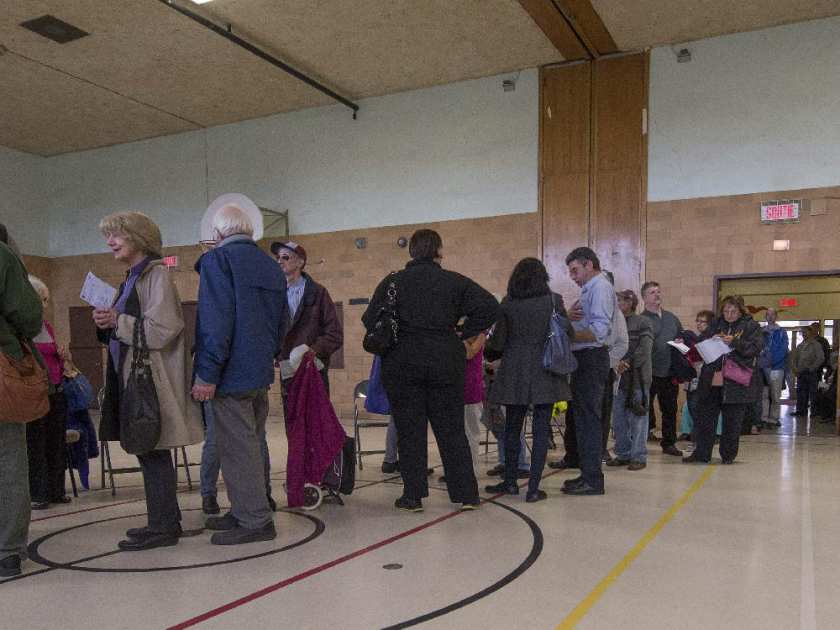 Voters lined up waiting to cast ballots in a school gymnasium Finally, in the past, First Past the Post has produced flawed results. It is one thing for a party to be over represented; it is another for an undeserving party to come to power. An excellent example of this is the British Columbia election in 1997. To make a long story short, the winning party received approximately 2% less support across the province than did the party of the official opposition.
With support more spread out across ridings, the governing party was able to win 6 more seats than the opposition and form a majority government. It is anti-democracy that a party can accumulate the most support yet still lack the ability to govern and have no input in passing legislation. Although a case like this is rare, introducing reform would eliminate such a case from reoccurring.
Change can be unnerving, especially when it involves something as important as how a country is governed. However, when a system is so flawed that it is producing undesirable results to this extent, it should be clear that a change is necessary.
 Jay Fallis is a graduate of the University of Toronto where he earned a Master’s Degree that focused on electoral reform. Jay Fallis is a graduate of the University of Toronto where he earned a Master’s Degree that focused on electoral reform.
He writes a column for a daily newspaper in Ontario, the Orillia Packet and Times,

 By Cindy Hunter By Cindy Hunter
August 29, 2016
BURLINGTON, ON
Whilst enjoying a cup of mint tea and reading my book the other day at a local coffee shop, I happened to overhear some distressing comments from one of the gals seated at the adjacent table. Sweetly and discreetly (so she thought), she dissed a fellow patron of the establishment with the following comments: “Look at that woman pushing the stroller. See the makeup on her face? My heart breaks for the wee one. How can a mother who spends so much time primping possibly give her child the attention it deserves? I swear, I could just cry.”
On overhearing the commentary, what I felt at that moment was not a grossly misplaced, anxious sense of concern for the child (who appeared to me to be comfortable, content and in no distress whatsoever). Nor did I usher in any feelings of condescension or disdain for the mother. What I did feel was sadness and disgust at the uncalled for remarks – the likes of which are all too common.
 The emotional hit for a person being bullied is incredible. It has led to suicide particularly within the teenage cohort. A woman’s right to wear makeup (or not) is just that – a right. Every woman has the right to choose how she wishes to present to the world. If that means she dresses in blue jeans and T-shirt every single day, she’s entitled to do so. If, rather, she clads herself in haute couture, more power to her. Whether she’s a walking, talking advertisement for her favourite tattoo parlour and/or chooses to shave her head and cultivate grass up there is really no one else’s concern.
As someone who has spent decades in the work force and made an individual choice to apply facial paints every morning, I can vouch for the fact that slapping on the foundation, mascara, eye liner, shadow, lipstick and whatever else becomes such a fast-paced part of the routine that it might use up all of ten minutes. No kidding. It really is that quick when you do it every single day.
Let’s assume for a moment, hypothetically, that the mother of a young child is a knitting fanatic – so much so much that she partakes in the activity for a good forty-five minutes or so every single day, ten minutes here, ten minutes there. Maybe the bulk of her knitting is accomplished when her spouse is spending cherished one-on-one time with the youngster.
How many other women do you suppose would begrudge her that daily forty-five minutes of knitting based on the trumped up excuse that it was taking time away from her small child?
Here’s a hint: None.
Here’s why: You’d be hard pressed to find any woman who perceives knitting as a threat.
 A dramatic way of making a point: how many of the people in the photograph actually bully people? Smooth talking troublemakers, along with their attendant, multitudinous, gullible shills, would have you believe that nonchalant, slickly packaged hatefulness (as per the above example) is no big deal – in fact harmless, really.
The reality is that it’s a form of bullying.
Such malevolence, in no small measure, and even though perpetrated behind the target’s back, plays a role in shaping collective beliefs and behaviours within families, within workplaces, within neighbourhoods and within society at large – which is, of course, the intent from the get-go.
We hear a lot about bullying among youth, but bullying is also rife within our adult population. For instance, in the specific realm of workplace bullying, Dr. Heinz Leymann, a research pioneer in the field, identified workplace bullying as ‘endemic in work forces’ throughout the world. As well, he estimated that 10% of those bullied take their own lives.
Whether the target is a young person or an adult, regardless of race or religion, bullying is bullying, the ultimate goal of which is to strip the victim of all dignity, in other words, to annihilate someone’s quality of life, or even, literally, the life itself.
Bullying can be kindled by something as seemingly ho hum as a critical remark about someone’s appearance – but the remark is oftentimes executed with a view to heap on subsequent helpings of covert ridicule, in concert with other means of degradation (i.e. ostracization), at any opportunity, until the desired lynch mob mentality is produced. At this juncture, the tiny mound of burning kindling morphs into a grotesque, yet (for many) scintillating pyre.
Bullies – whether Ph.D. wielding, illiterate or somewhere in the middle – excel at the dark art of fabricating and promulgating excuses to scapegoat. The excuses don’t have to be clothing or makeup related. They can be as simplistic as criticizing the expression on someone’s face when that person is merely going about her own business or as brazen as spreading preposterous rumours, based on abject conjecture, about the person’s sex life or level of adult beverage consumption.
 Are you doing any of this? If you are – do you know why? Are you one of the cultivated abettors and you just happen to be single, lonely and in need of a mate? Have no fear. Your ringleader will spend every waking minute of every day for as long as it takes to unearth and introduce you to your perfect potential spouse. Voila! Here he is.
The favour is essentially a bribe, administered as insurance that you don’t fall prey to an attack of conscience regarding your personal role in the persecution of the target.
Bullies look the same as you and me. Bullies will effectively hoodwink you into perceiving them as veritable pillars of society and as being compassionate to the point of saintliness. (Crocodile tears in church anyone?)
When presented with evidence of their bullying, bullies will often audaciously retort, “Me? Bully? Why would I?”
Indeed.
So what can be done?
 Student being bullied by a group of students; happens every day in high chools – how do you put an end to it? Each of us is sole proprietor of an individual mind. Very often, if we pause and tune in to our innermost knowing selves, we can discern between someone’s legitimate grievance against a third party versus when the complainant is aiming to stir the proverbial pot.
Rather than accept those (ahem) ‘friendly’, seductive invites to hop on board the Bully Bandwagon, it sure would be nice for those of us with a conscience to stop taking the bait and to collectively evolve down a path of maturity, authentic respect, and common sense.
The shade of her lipstick evoked an image of lacquered eggplant. Ultra dramatic. And it looked gorgeous on her.

 By Ray Rivers By Ray Rivers
August 28, 2016
BURLINGTON, ON
Canada’s Lester Pearson won the Nobel Peace prize for his pioneering work in peacekeeping during the 1956 Suez crisis, a conflict which threatened to pit the US against fellow NATO members the UK and France.
Canada has been one of the strongest supporters of peacekeeping from that get-go. That is until the previous federal government and Mr. Harper virtually shut down the country’s contribution to UN peacekeeping operations and changed our global affairs perspective from honest-broker to aligned-party.
 Canadian armed forces serving as United Nations Peacekeepers But then Mr. Harper had shunned the UN and it had in turn shunned Canada, shutting us out of a Security Council seat many thought would go to Canada. We once led the world with 3300 peacekeepers in the field, today there are just 34 – down to a mere one percent of our historic past. An all-time low at a time when the demand for UN peacekeeping operations is at an all-time high.
So, in keeping with the international re-engagement Mr. Trudeau promised during the last election, his government announced a dramatic reversal of previous policy, substantially increasing both financial support ($450 million) and peacekeepers (600). Ironically this announcement came on the very day that Mr. Harper announced his resignation from Parliament and politics.
In an article in this paper three years ago, I raised the fact that the Harper government had been supporting growth for Canada’s manufacture and export of arms, noting that this comprised the sum total of his industrial economic policy. There are a large number of armament exporters in the world. The USA, Russia, France and China dominate the international market.
The United NNations 2014 Arms Trade Treaty (ATT), governs the international trade in weapons for its signatories and restricts sales to nations which use them against their own populations. Over 130 nations have signed and almost 90 ratified this treaty but China, Russia and Canada have yet to do so. In addition there are UN nation-specific sanctions and arms embargoes which must be observed by all UN member nations. South Sudan and Libya are two sanctioned nations.
 It is an ugly brute of a vehicle that can only do harm to the people outside of it.
It was an unfortunate discovery that Streit, an Ontario company, had been selling armoured vehicles through a third party in 2014 to both of these nations. The federal Liberals were caught off-guard and holding the bag left them by the previous government. This became particularly embarrassing since it followed the Trudeau government’s refusal to disallow another Harper era mega deal to sell armoured vehicles to Saudi Arabia.
That deal, worth $15 billion dollars and negotiated in 2014, would make Canada the second largest arms supplier to the Middle East, after the USA. The hypocrisy was ripe when a former Tory cabinet minister, Tony Clement, raised the issue, presumably to embarrass the governing Liberals with the tricky dilemma over this lucrative job-creating deal that his government had negotiated.
It was a tough decision. After all it is hard to call yourself a peacekeeper when you are peddling weapons of war to the very people whose cross-fire may put you in harm’s way. So there were no tears by the federal Liberals to finally see the backside of Mr. Harper as he heads off for new employment better suited to his particular skills.
I didn’t disagree with everything he and his government accomplished in their time in office – but he was a disaster in foreign affairs, and that goes for his regressive policies in criminal justice and prison management as well.
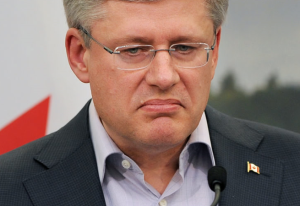 Former Prime Minister Stephen Harper. Mr. Harper presided over the poorest economic growth rate in Canada’s modern history. His efforts to water down environmental protection notwithstanding, he never built a single oil pipeline. His fixation with petroleum contributed to the economic collapse of his adopted home province. And not least of all, we should remember how he hid in a closet during that gun fight on the Hill.
The British government recently declassified a number of papers from the Foreign and Commonwealth Office, included in a link below. These are pretty frank depictions of how the Brits viewed our leaders in the eighties – Mulroney, Turner and Pierre Trudeau. Though nobody who lived through that era should be surprised.
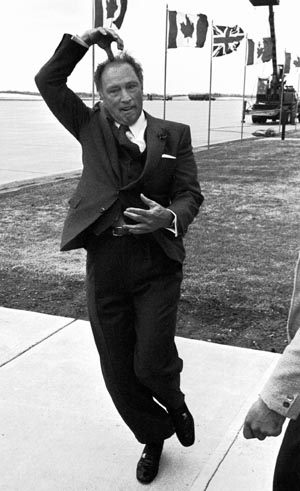 Former Canadian Prime Minister Pierre Trudeau is seen here performing a pirouette in Ottawa after the proclamation of the Constitution Act April 18, 1982. Despite all of Pierre Trudeau’s antics and progressive (radical) policies, what most worried them was his 1984 peace campaign. It is hard to understand how his naive bopping around world capitals on what ultimately became a hopeless venture would trouble anyone. How could seeking peace be dangerous? A “bloodless and over-intellectual approach” was their bottom line.
I suspect that Canadian diplomats had some equally choice words for Maggie Thatcher, as well. In the present day I would expect someone in our Global Affairs would point out that David Cameron was even more naive than Pierre in calling that stupid Brexit vote. I wonder how today’s British diplomats regard the younger Trudeau – the darling of the international press in his first year in office. He is flamboyant, but not quite like his father.
And I wonder how those foreign eyes would sum up Mr. Harper – other than to say, as I do, goodbye and good luck.
 Ray Rivers Ray Rivers is an economist and author who writes weekly on federal and provincial issues, applying his 25 years of involvement with federal and provincial ministries. Rivers’ involvement in city matters led to his appointment as founding chair of Burlington’s Sustainable Development Committee. He was also once a candidate for public office at the provincial level.
Background:
Defence Industry – Streit – More Streit – South Sudan Sanctions – Saudi Weapons – Canada Exports to Mid-East – Burlington Gazette Oct 2013 – Abandon Peace Keeping –
Back into Peace Keeping – Suez Crisis – What UK Diplomats Really Thought –

 By Ray Rivers By Ray Rivers
August 13, 2016
BURLINGTON, ON
For a mouse sleeping next to the elephant, we Canadians are pretty nonchalant about who our neighbours elect to be their president every four years. Or perhaps we know we can wait out a noxious US leader and hope for a better one the next time. Tensions got pretty high when an angry Richard Nixon lost his patience with Pierre Trudeau, calling him a “son of a bitch”, “asshole” and “pompous egghead” – not to his face of course.
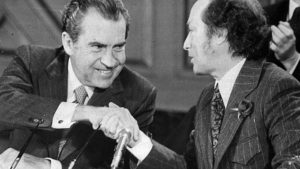 Former US president Richard Nixon and Pierre Elliott Trudeau, prime Minister of Canada. Not much in the way of trust between these two men. 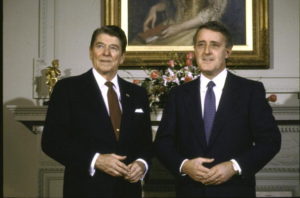 US President Ronald W. Reagan (L) posing with Canadian Prime Minister Brian Mulroney before talks in Ottawa, April 1987. Then a little over a decade later Brian Mulroney and Ronald Reagan were in ideological bed together singing about Irish eyes. Their strong personal friendship enabled Mulroney to disarmed Reagan, and convince the old gaffer, or was that Gipper, to do something about acid rain, a problem Reagan was sure was caused by trees.
Clinton and Chretien, two middle-road liberals, engaged respectfully and warmly with each other throughout their time together. With Mexico they forged the North American Free Trade Agreement which has continued until today. And Clinton convinced Chretien to join him in intervening in the aftermath of Yugoslavia, using Canadian warplanes to help the Americans bomb the hell out of Serbia.
Once Dubya came on the scene, the romance with Washington came to an end. Chretien refused to support GW Bush’s insane adventure to take down Saddam. However Canada’s response would have been different had Canadian neo-con, and Bush admirer, Steven Harper been in power at the time. And Harper did spend a couple of years during Bush’s reign before the leadership changed again south of the border. But it soon became evident that there was no love lost between Obama and his Canadian counterpart, as he stared down Harper’s idle and useless threats over the Keystone pipeline.
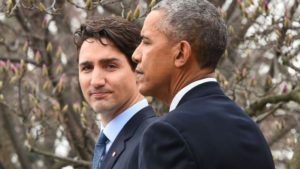 Prime Minister Justin Trudeau and US president Barack Obama Trudeau and Obama found a sweet spot in their relationship early on, though Obama is now a ‘lame duck’ president awaiting replacement this November by former First Lady Hillary Clinton or real estate mogul Donald Trump. Given generational factors alone it will be challenging for Trudeau to find a spot so sweet as before with either of these candidates. But as everyone should expect, Mr. Trump, the red neck, would prove the greater challenge.
Clinton is proposing a reasonably left wing agenda, swept even more in that direction by a compromise kiss she accepted from contender Bernie Sanders, in order to keep peace on the home front. Income-geared free tuition, campaign expense reform, equal pay for women, taxing the rich, breaking up the banks, killing the TPP trade deal, increasing the federal minimum wage, background checks for gun purchases, and massive federal infrastructure spending.
Her policies roughly parallel those of Trudeau, as well as some of the provincial Liberal governments. This platform in fact ups the ante for social progress and equality, giving more credibility to Canada’s current political direction. And Mrs. Clinton’s opposition to the TPP would allow Canada to escape from what many consider a bad deal, providing welcome relief to a PM ministering to a divided parliament on this matter.
 American Democratic candidate for the office of the president of the United States Hillary Clinton. Otherwise, Clinton would be expected to continue to follow Obama’s policy framework. Commitment to common defence through NATO, for example, would be maintained consistent with Canada’s current objectives. This is a framework in which Canada’s current leadership would find compatibility, despite questions around ongoing trade irritants, such as softwood lumber or beef. But then those irritants have persisted almost regardless who sat in the white House or whether we had a ‘free trade agreement’ or not.
The future would be way more exciting, albeit more uncertain, under a Trump presidency. Early promises to build a wall with Mexico and ban Muslim immigrants, also raise concerns about potential limitations to free access for Canadian businesses and snowbirds. Trump’s musings on NATO and Russia could, ironically, push the EU into a Eurocentric defence posture, possibly leaving Canada to fend on its own when it comes to arctic sovereignty.
And of course Trump’s proposed trickle-down Reagan-style tax cuts would lead to more articles from the Frazer Institute and National Post decrying how poorly the 1% are being treated here in Canada. Meanwhile his massive deficits and increased debt would tend to bring down the US dollar and bring us closer to parity, albeit in a currency market once again looking for stability.
Trump would mark another US turnabout on climate change and would rupture the recently announced North American commitment to control that global threat. Trump says that everything would be negotiable. This is not an unexpected response from a man who has shown so little sophistication in matters of foreign or domestic policy. To mis-quote Bob Dylan, when you don’t know nothing, you got nothing to lose. Everything is up for grabs.
 Donald Trump, Republican candidate for the office of the President of the United States From what he’s said, Trump’s presidency would be a crap shoot, and it could be uncomfortable for us here in Canada. After all, the USA is our largest trading partner, we share our defence policy with them and our cultures and history are heavily intermingled. And for an independent Canadian leader looking to keep our fences in good shape there can be a fine line between dialogue, sucking up or talking back. Still our PM’s have always held their own, including during those rough patches with Harper and Obama and Trudeau and Nixon.
Should Canadians be worried about a Trump presidency? Only in as much as almost everybody else on the planet would be. Despite all his rhetoric, as president he would be limited by his country’s constitution, its current laws and a Congress, which even if it remained Republican would not likely go along with most of his nutty notions. And the way things go in Washington he’d be out of office before half of his really idiotic proposals hit the road.
Oh sure Trump would have access to the nuclear codes – but like Putin and other national leaders with nuclear weapons, he would quickly learn that the nukes can be more of a constraint and liability than an asset.
 Ray Rivers Ray Rivers is an economist and author who writes weekly on federal and provincial issues, applying his 25 years of involvement with federal and provincial ministries. Rivers’ involvement in city matters led to his appointment as founding chair of Burlington’s Sustainable Development Committee. He was also a candidate in the 1995 provincial election
Background links:
Nixon and Trudeau – Mulroney/Reagan –
Clinton’s Promises – Trump’s Promises –

 By Ray Rivers By Ray Rivers
August 9th, 2016
BURLINGTON, ON
There is nothing conventional in the race for the US White House this year. The chief contenders are anything but conventional.
One is exceptionally qualified, and the other not at all, so the choice should be easy. But none of that seems to matter to an electorate tired of the ordinary and mundane and looking for something new, fresh and exciting.
Not unlike the bi-polar school teacher in the 1977 movie version of the book “Looking for Mr. Goodbar”, there is a new fascination with someone who isn’t part of one’s conventional experience – a new exciting high to be achieved by toying with the prospect of danger – the fantasy and the reality. Which brings us to Donald Trump, a man who has shown no comprehension of the job before him, though if nothing else he is exciting.
  As outgoing president Obama made emphatic, there is no better qualified candidate than Hillary Clinton. And if qualification and experience were all that mattered there would be no contest, and the tired but somewhat boring and compromised Hillary would be the shoo-in victor on election day. After all, she is running against a man with a dubious record in his business ventures and one who has never even run for public office – let alone the highest office in the land, in all his seventy years. As outgoing president Obama made emphatic, there is no better qualified candidate than Hillary Clinton. And if qualification and experience were all that mattered there would be no contest, and the tired but somewhat boring and compromised Hillary would be the shoo-in victor on election day. After all, she is running against a man with a dubious record in his business ventures and one who has never even run for public office – let alone the highest office in the land, in all his seventy years.
But America is a divided people, red and blue states that rarely change their colour, beset with long suffering prejudices on all sides. Despite electing a black president two terms in a row, America is still conflicted with racism. It is a violent place with more guns per capita and greater incarceration than any other.
Despite having the most super rich, the US is only 44th in health care efficiency, 24th in literacy, 14th in education, and arguably has the second highest level of social ignorance among developed nations. Surprisingly at least one survey tags the USA at 46th in press freedom.
And if Trump’s plan to make America great again included dealing with those issues – every thinking American should consider voting for him. But it doesn’t. There is nothing of such to be seen in all his diatribe on America First and making it great again, nothing about introducing gun control, promoting economic and social justice, and furthering education and awareness. Hillary’s plan comes closer to those goals, in fact.
  Donald Trump cleaned-up in the Republican nomination race by simply being himself. His victory was more of a fluke than a deliberate strategy. He just plumbed for and echoed the deepest, darkest recesses of the worst of America, and spewed racism, homophobia and insults as no American politician had done before. The more outlandish his comments, the more he gained notoriety and support among disciples who mistook his words of prejudice for plain-speaking. He was/is different and exciting. But what makes him dangerous is his lack of detail – what he actually would do. Donald Trump cleaned-up in the Republican nomination race by simply being himself. His victory was more of a fluke than a deliberate strategy. He just plumbed for and echoed the deepest, darkest recesses of the worst of America, and spewed racism, homophobia and insults as no American politician had done before. The more outlandish his comments, the more he gained notoriety and support among disciples who mistook his words of prejudice for plain-speaking. He was/is different and exciting. But what makes him dangerous is his lack of detail – what he actually would do.
Once he scored the candidacy of his party one would have expected a whole new playbook, more befitting of a presidential candidate in the big arena. But Trump doesn’t have one. He has nothing to offer but his swagger, a revisionist unfunny Roger Dangerfield for our times. Whether that will continue to propel him is the big question. Hillary has not been able to cripple the significant public support he continues to garner. And so, like other irrational outcomes of public will, such as Rob Ford’s election and Brexit, Trump should not be discounted.
An interesting aspect of this race is the Russian card. Putin has confessed admiration for Trump and vice-versa. Trump’s campaign manager is pro-Putin, having advised the ousted pro-Russian Ukrainian leader, and the Donald’s musing about NATO and Crimea should be unsettling to an America once ready to nuke the Russkies to smithereens, and likewise. But Trump is the inveterate teflon-man and even flirting with Putin has not bothered his core followers, including many veterans and those raised during the cold war.
As the election gets nearer and Trump continues to poll well, Americans will need to ask themselves some hard questions. The first being how badly do they want the kind of change Trump is promising – isolation and a radical shifting of alliances. Do they really want to give him a carte blanche to reverse the past half century of American foreign policy?
Going to bed with Putin might be an exciting idea.
But where will this dangerous fantasy lead? Is Putin really Mr. Goodbar?
Editor’s note:
The conventions are over and the general election has officially begun. In the primaries, Bernie Sanders received 1,846 pledged delegates, 46% of the total. Hillary Clinton received 2,205 pledged delegates, 54%. She received 602 superdelegates. Sanders received 48 superdelegates.
The Democratic party, based on these numbers, is not as united as they would have us believe. These are very dangerous times for the United States. Rivers will write next on what he thinks Canada can and should do to protect its interests.

Ray Rivers is an economist and author who writes weekly on federal and provincial issues, applying his 25 years of involvement with federal and provincial ministries. Rivers’ involvement in city matters led to his appointment as founding chair of Burlington’s Sustainable Development Committee. He was also a candidate in the 1995 provincial election
Background links:
Mr. Goodbar – Clinton Qualified
Putin-Trump Axis
America’s Global Ranking –

 By Tom Harris and Tim Ball By Tom Harris and Tim Ball
July 29, 2016
BURLINGTON, ON
The following is an opinion piece from the International Climate Science Coalition on climate change. In the interest of open public debate on a matter of critical importance we give then space to put forward their views.
The best answer to many of the claims being made in climate change town halls across Canada this summer is simply: of course!
At the meetings, one of which will be held at 7:00 pm on August 4 at the Mainway Arena in Burlington, the public will be told that “Climate change is real.” Of course it is! Gravity and sunrise are also real. But that doesn’t mean we cause them or we would be better off without them. Climate has been changing since the origin of the atmosphere billions of years ago.
But, “man made climate change is a fact,” they respond. Of course! It is obviously warmer in urban areas than in the countryside because of man made impacts. However, the only place where carbon dioxide (CO2) increase causes a temperature increase is in computer models preprogrammed to show exactly that. Records show that temperature increase precedes CO2 increase.
All that should matter to public officials is whether our CO2 emissions are in any way dangerous. Since they are almost certainly not, the $1 billion spent every day across the world on climate finance is mostly wasted.
“Scientific organizations across the planet agree with the climate scare,” say eco-activists and politicians. Of course! Many science entities have strong political and financial motivations for agreeing with political correctness. But none have demonstrated that a majority of their scientist members actually support the alarmist stance. And no reputable world-wide survey has demonstrated that a majority of scientists who research the causes of climate change support the hypothesis that our CO2 emissions will cause dangerous climate change.
Next activists tell us, “2014 was the hottest year on record, until 2015 surpassed even that. The last two decades include the 19 hottest years on record.”
Of course! One would naturally expect the warmest years to be at the top of a warming record. And thank goodness we have been in a gradual warming trend since the depths of the Little Ice Age in the late 1600s.
Regardless, 2014 set the record by about four hundredths of a degree Celsius; 2015 by 16 hundredths of a degree. These amounts are too small to even notice and one is even less than the government’s uncertainty estimates of about eight hundredths of a degree.
But “observations of extreme weather events are increasing. Insurance claims are skyrocketing,” we are told.
Of course! As human habitation increases in areas that were previously sparsely populated, there will naturally be more reports of extreme weather and more related insurance claims. But there is no convincing evidence of a rise in the incidence or severity of extreme weather events in Canada in recent years.
The next alarmist claim? “Sea levels rose 7 inches in the last century!”
Of course! Sea level has been rising since the end of the last glacial period, 15,000 years ago. There has been no recent acceleration, and the current rate of rise is less than one tenth that of 8,000 years ago.
As their climate change claims fail, activists change targets: “The oceans are becoming more acidic!”
Of course! But the change is very small. There are regions in the ocean where pH varies more in a day than the most extreme forecasts for the 21st century, yet ocean life adapts.
Overall, the oceans have never been acidic (i.e., a pH less than 7). Dr. Craig Idso, founder of the Center for the Study of Carbon Dioxide and Global Change in Tempe, Arizona explains, “Forecasts of future pH come from unproven, theoretical postulations by models based on absorption of CO2 by the oceans. Regardless, there really is no such thing as a representative pH for the whole ocean. It varies vastly near the coast and in upwelling regions, much more than the projected increase in acidity.”
Climate campaigners are upset that fossil fuel companies support some of the groups who question political correctness on climate change.
Of course! But the amounts being funneled to entities which support the climate scare is enormously greater. The latest Foundation Center report (2010) shows that the California-based William and Flora Hewlett Foundation alone donated over one half billion dollars to climate change programs in 2008, over one hundred times as much as the average annual donation activists complain that the conservative Koch brothers have given to skeptics.
All this would be humorous if it did not have such serious ramifications. In the vain hope of stopping trivial changes in climate, activists and compliant politicians are working hard to force us to switch from coal and other fossil fuels, our least expensive and most abundant power sources, to unreliable and expensive alternatives such as wind and solar power. The public need to ask them,
“Why are you doing this? Who are you trying to please?”
 Tom Harris is executive director of the Ottawa-based International Climate Science Coalition. Dr. Tim Ball is an environmental consultant and former climatology professor at the University of Winnipeg in Manitoba. Tom Harris is executive director of the Ottawa-based International Climate Science Coalition. Dr. Tim Ball is an environmental consultant and former climatology professor at the University of Winnipeg in Manitoba.

 By Ray Rivers By Ray Rivers
July 25, 2016
BURLINGTON, ON
 Is this a smug over-confident man – or has he convinced America that he can and will protect them? It’s a crazy, topsy-turvy world. And nothing is more upside down than what is happening south of the border. The Republican party has nominated the bombastic and seemingly racist, tycoon Donald Trump, to be their standard bearer for the most important job on the planet. Trump, who has never served in any public office delivered an acceptance speech which was more than a little scary – not as much by what he said but more for what was left unsaid.
Building a border wall with Mexico and banning Muslims from entering the USA are the closest things to policy statements he’s uttered, though he has also mulled about NATO being obsolete and tearing up international trade agreements. Trump calls it America First, a term that can be found in the dirty laundry of America’s troubled past.
American history has its very roots in isolationism. Founding fathers Washington and Jefferson were determined to leave Europe and European entanglements behind them as thy founded their new land. They even cancelled their military alliance with France once their independence-war was resolved.
Following a late and reluctant involvement in the First World War America’s right-wing politicians kept it out of the League of Nations, an American concept and the pre-cursor to today’s UN. The US’s decision to stay out of the League damned this early attempt at global governance and ultimately contributed to the advent of WW II.
America First was a popular early WWII movement which collapsed following the attack on Pearl Harbour. Membership included Charles Lindbergh, the Kennedys and other prominent Americans who inadvertently became apologists and supporters of Hitler’s destructive policies, much as Trump’s advisor’s are to Russia’s Putin today.
America First is a powerful sentiment but is it even possible? America has been the cop of the world since the middle of the last century. And it has also been policeman, judge and jury too often. So it’s not surprising that ISIS has sprung up – a political and social superbug intent on countering the medicine being doled out by an over-prescriptive and paternalistic USA.
It all makes sense to a nation tired of endless wars and unsure about its place in the world any more. And Trump is the iconic American conservative. Inward looking and largely disinterested in the rest of world. He may be better travelled than Bush and married to a foreign chick, but he is still that local fellow – not at all like the intellectual globe-trotting Kerrys or Clintons. And that is why he may well become America’s next president. He really is like so many of his supporters in that regard.
Almost everything that goes up comes down. Everything old looks new again given enough time. And we eventually get bored with everything. So change is a potion, transforming the mundane to magic – at least until we realize that ‘plus ça change, plus c’est la même chose’.
Change as a motto worked for Obama. And changing back from the future may very well work for Trump and his nostalgic view of the world, it’s just back to Happy Days.
 Gas Donald Trump managed to reach into the hearts of an unhappy American electorate. If you lived in Nebraska, wouldn’t you be tempted to ask what the hell your leaders are doing meddling in the Middle East, or why the US is risking your child soldier’s life defending Europe from Russia or Japan from China? Wouldn’t you be tempted to ask why your leaders are allowing cheap foreign products to enter your markets duty free while your factories are shut down forcing their workers to line up for unemployment, welfare or Mac jobs?
And wouldn’t you be tempted to ask why you should be welcoming people, like immigrants from Muslim countries or Latin America, who bring their own culture and religion – changing the face of the America you once knew and loved? That was the most powerful question the British recently asked themselves. Their answer was Brexit. Down home America’s answer may well be Trump and America First.
 Ray Rivers Background links:
Ray Rivers is an economist and author who writes weekly on federal and provincial issues, applying his 25 years of involvement with federal and provincial ministries. Rivers’ involvement in city matters led to his appointment as founding chair of Burlington’s Sustainable Development Committee. He was also a candidate in the 1995 provincial election.
Publishers engage informed people to write which Ray Rives has been doing for the Gazette for more than three years. We are proud to have Ray Rivers as an opinion writer however in this instance we do not agree with the views Rivers has put forward.
Isolationism – America First – League of Nations – Republicans in Cleveland –
Trump and Fear – Obama on Trump – Lies – Trump the Dictator

 By Pepper Parr By Pepper Parr
July 21, 2016
BURLINGTON ON
Is it already too late?
Have we passed the tipping point and are at the point where the greenhouse gasses already in the environment is going to continually increase the amount of CO2 and ice caps will continue to melt – the sea level will continue to rise and places like parts of Florida will just be under water.
 The Maldives Islands are expected to slip under the water as the sea level rises. The people who study this stuff seriously are believed to being preparing plans for the changes that are going to take place. There are parts of the American coast line that are being given up to rising water levels.
There are places in Burlington and the surrounding community where concrete docks that boats used to be tied up to are now several feet under water.
And at the same time there are lakes in Northern Ontario where the wooden dock sits in the middle of dry lake bottom with the water tens of yards away when it used to lap at the edge of the dock while children jumped into the water from deck.
Are the scientists and the emergency planners telling the public the truth about what we are really up against?
There is a part of Burlington where there are some 72 homes that are in a flood plain and will eventually have to be removed. Those homes are clearly marked on a map that the city has not hidden – nor is it something they have talked about all that much.
Burlington knows that it is going to have to have a lot of money in reserve funds for the next flood. The people who do this kind of work don’t use the word “if” when talking about the next flood – for them the key word is “when” followed by “where”. Burlington
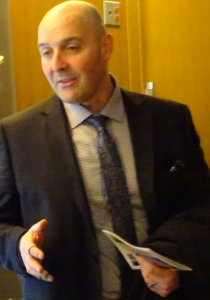 There are parts of Burlington that are very threatened should the city experience another 190mm + of rain in half a day. The Fire department managed the Emergency Measures. Fire Chief Tony Bavota said at a public meeting that given what we know today – Hidden Valley would not have been built. The flood potential in that part of the city is “something we could not handle”. For the fire chief Hidden Valley is a potential ground zero.
We know these things today and yet the best we seem to be able to do is work harder at recycling those plastic water bottles when the things should be banned.
Use public transit that doesn’t yet meet the needs of people who need to be able to get from place to place in a reasonable amount of time.
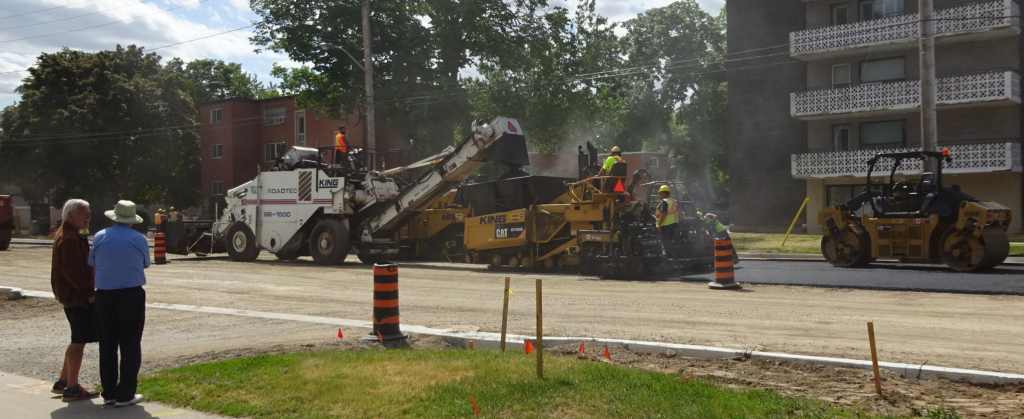 The focus in Burlington is on re-building roads. Burlington spends tens of millions repairing the roads so that people can drive comfortably. This is a city that has an ageing population that was raised on the automobile during a time when gas was cheap and they are never going to give up their cars until someone takes their driver’s license away from them.
And they are a large enough cohort to scare the daylight out over every politician at every level; appealing to them to make the change for the sake of their grandchildren? They want that car so they can visit their grandchildren and they aren’t going to make that trip by bicycle or public transit.
When MP Pam Damoff asked people what they thought could be done – the true believers, the ones who belong to Burlington or Oakville Green, talked about the time they spend planting trees and cleaning up the ravines each year and do the ongoing persistent advocating. But in Burlington there still isn’t a private tree bylaw.
Some serious mistakes were made with the way most of the planners did things in terms of land use planning – they didn’t seem like mistakes at the time but we are now at a point where it is close to impossible to correct those mistakes.
We have lost a lot of time.
At best it is going to take bold action to bring about any change – and it is all three levels of government that are going to have to take those bold steps.
They can’t begin to do much of that until the public is ready – and that isn’t going to happen until the public realizes the wolves are at the door.

 By Pepper Parr By Pepper Parr
July 16th, 2016
BURLINGTON, ON
Where is Ray?
For many Gazette readers Ray Rivers had become a Friday habit – his views on matters federal, provincial and from time to time international have appeared in the Gazette for more than three years.
I first met Rivers when he was talking to a group of Liberals who used to meet regularly at Artisano’s. I liked what I heard Rivers saying a found a way to strike up a conversation. That led to his writing for the Gazette.
 Rivers tries to get to New Zealand once a year – relaxes with family and gets in a little fishing. His daughter returned to Canada with he husband and their children. Ray is working on making a good hockey fan out of at least the grandson. This summer Rivers and I decided that a full break for a month or more was well deserved – and except for one occasion when he had to say something about the Brexit mess in the United Kingdom, Rivers has behaved and worked with tools on his farm in Mountsburg rather than the keyboard on his computer.
There is a tree lot that needs some pruning and a new deck for the hot tub. Grass to be cut with the mower that Rivers treats as something you drive at a NASCAR event and the chicken coop needs a good clean up.
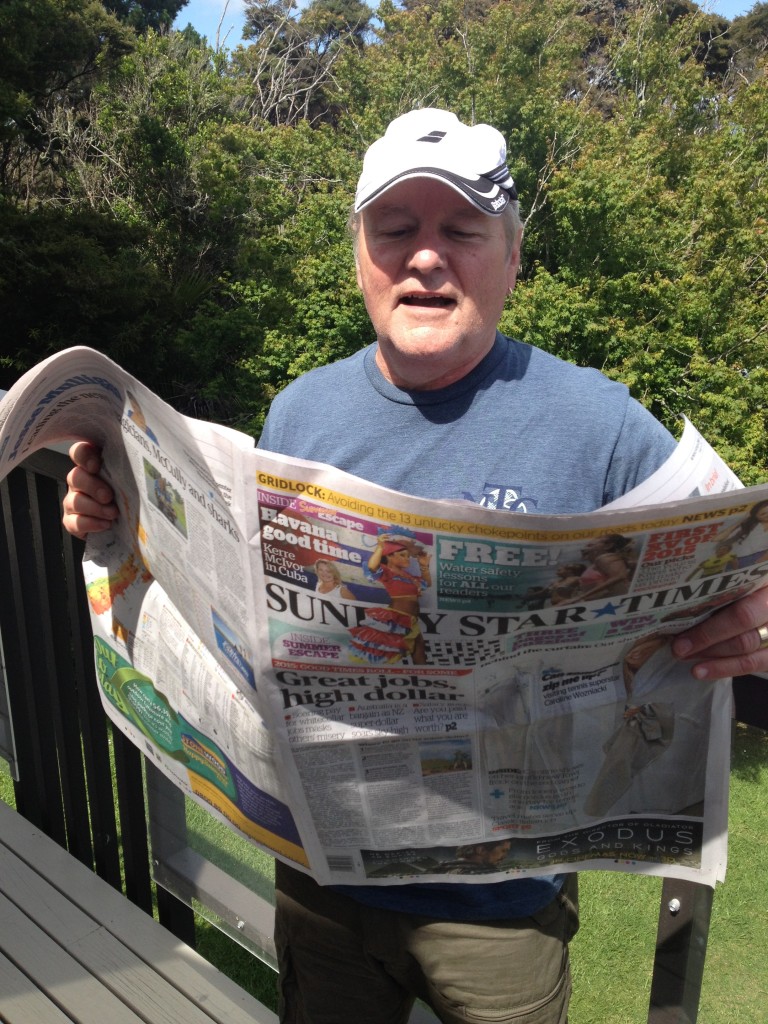 Rivers is incapable of getting through a day without reading at last one newspaper. So – for those who wonder where Rivers is – it isn’t quite “gone fishing” but it is a respite from a task that can get onerous. Writing a column every week is demanding.
Rivers and I usually have a short conversation about what he would like to write on – we exchange ideas and I pretty well leave him to his own devices. It is the readers that keep him on his toes.
There are about a dozen that watch what he writes very carefully. It did take a while for Gazette readers to fully appreciate that Rivers was a columnist with a view point. Several complained that he was a Liberal and therefore shouldn’t be writing articles.
He is certainly a Liberal and a liberal as well – and that was the point. The Gazette wanted someone with a clear point of view. We also wanted a strong Conservative and talked to a number of people who could have filled that role – none chose to step up the plate.
Public opinion needs to be informed and the exchange of views is part of what informs people. It took us some time to bleed out the more raucous comments that used to appear in the Gazette.
This is not yet a city with a clear understanding of how important it is to keep the public informed and to do so as transparently as possible.
Rivers, who has consistently written a column with often extensive links to other material that few columnists provide.
 With the New Zealand part of the family now on Canadian soil Rivers can see his grandchildren whenever he wants. Rivers will be back in the fall – we expect him to have something to say about both the Republican and Democratic conventions taking place in the United States and how our federal and provincial governments are doing in this country.
The Gazette is fortunate to have Rivers as part of the editorial team – Burlington doesn’t yet fully appreciate the contribution he makes – which isn’t about what he actually writes – but about the fact that he does write. The city badly needs a public that is informed and is prepared to speak out.

 By Staff By Staff
July 14th, 2016
BURLINGTON, ON
Jim Young, a 34-year resident of Burlington is an active member of Burlington Seniors Advisory Committee; he represent them on the Integrated Transportation Advisory. Young was delegating on an issue that he is passionate about – how seniors get around the city.
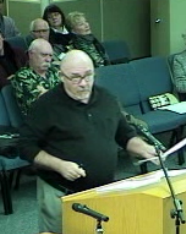 Jim Young – thinks the city should consider letting seniors use buses free during off peak hours. Council was listening to people who had thoughts on the cycling lanes that city is considering putting in on various parts of New Street.
“I delegate today” said Young “as a private citizen to offer my private thoughts on the issue at hand.”
“You will understand that for many seniors cycling is not an immediate or pressing issue, (for some of us walkability is challenging enough) though for many seniors it is a hobby that we would love to practice in the healthiest and safest manner available to us. To that end I believe most citizens are generally supportive of the concept, that moving forward, the City must look to promoting cycling as a viable transportation alternative that must be encouraged and accommodated safely, in line with its strategic plan as a ”City that Moves”.
“I would however ask that any accommodation for safer cycling be considered in a way that does not impede or reduce improvements to transit services. Transit is the mode of transport which, by the nature of aging and economic necessity, is probably more the transport mode of the future for seniors in Burlington than cycling.
“So when council comes to weigh the alternatives for bicycle lanes on New Street and the relatively high costs of some of them I would ask you to consider these two thoughts:
Accommodating the sixty cyclists identified in the New Street study for approximately ¾ of the year will cost between $121,000.00 and $4,950,000.00 depending on the alternative chosen. The staff recommended alternative is estimated at $210,000.00.
If you have not already received it, council will very soon be asked to consider a position paper from one of your citizen’s advisory committees titled “Improving Transit for Seniors Improves Transit for Everybody”.
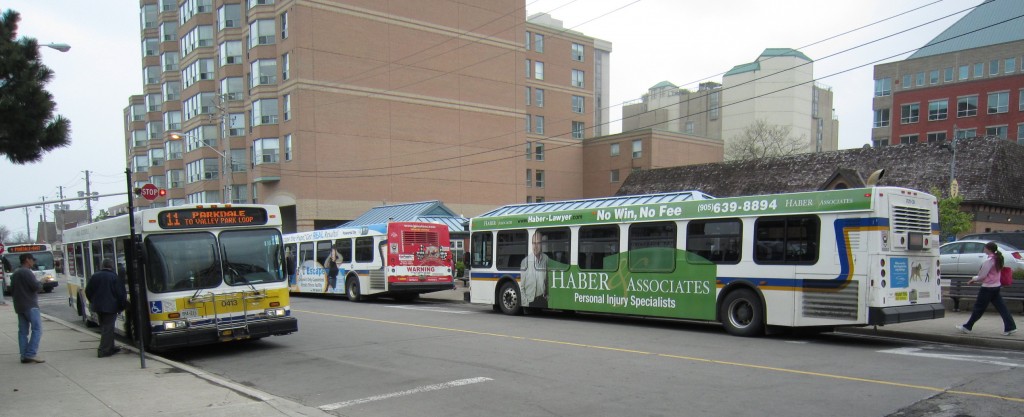 Transit advocate would like the city to let seniors use the service free during off peak hours. “I have worked with many of you” said Young as he addressed members of council “and city management as well preparing the paper that will recommend free transit for seniors during off peak hours between 10.00 am and 3.00 pm, Monday to Friday. The cost for this will be between $48,500.00 and $72,750.00 per year.
Young added that “even Keith Spicer, Director of Transit, will, when his arm is twisted, agree it will probably cost less than $100,000.00. to provide this service.”
“I respectfully submit that as you consider allocating considerable sums of money to make 60 New Street cyclists happy for two thirds of the year that you consider what allocating a fraction of that money to free transit for seniors in off peak hours would do to making 35,000 Burlington seniors happy on every street all year round. (The $4.95 million option would provide free transit for the next 65 years.)”
It was at this point that Committee chairman Rick Craven, councilor for Ward 1, interrupted Young and asked that he no stray too far from the purpose of the meeting – which was cycling lanes.
Related news stories and comment:
Council couldn’t find a majority for free senior’s transit.
Citizen proposes free use of transit service for seniors during off peak hours.

 By Carol Gottlob By Carol Gottlob
July 7, 2016
BURLINGTON, ON
I live in the east end of Burlington, around New Street, and I always marvel when I see photographs taken when my part of town was being developed. The few trees that could be seen were very small
Today when I drive my bike down the street or take my dog for a walk I see trees that are mature and give my neighbourhood a character of their own which is indeed worth preserving.
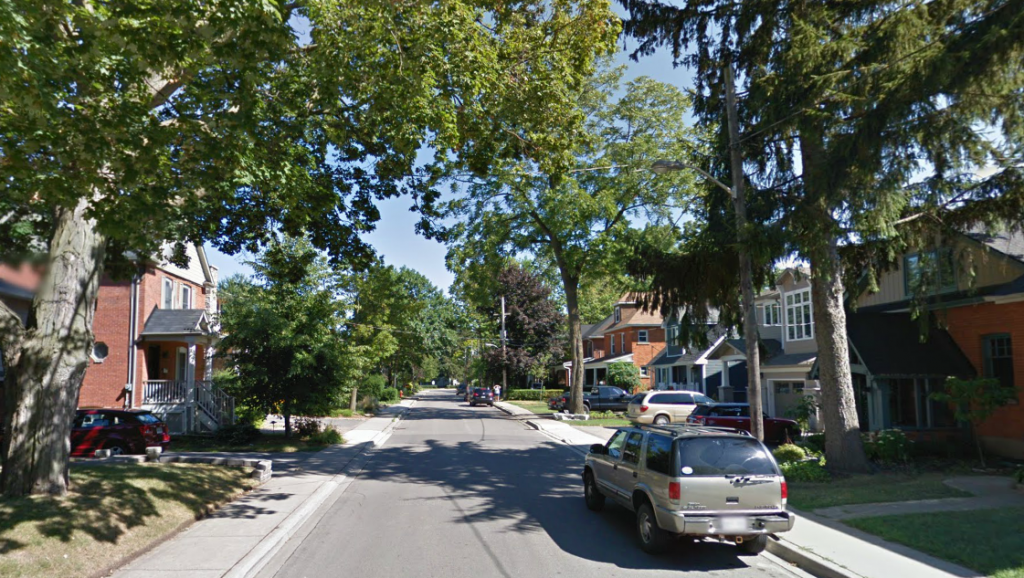 Caroline looking East from Hager: community wants to retain the single family home zoning for the precinct. The trees are for the most part on private property. When you look at those houses “west of Brant” which were likely built in the 1930’s and ’40’s, some in the 50’s, do you think those majestic trees were there then? The shrubbery and landscaping are features that we have added.
Over the years they have filled in the neighbourhood to give it that stately effect. Likewise, I believe intensification along main thoroughfares and increased public transit meets the needs of the ever-growing “single society”.
We live in a society where there is an increasing number of divorced, widowed and selectively single people, modest, affordable living space with plenty of opportunity for social interaction meets their needs
(Don’t, however, get me started on the notion of “affordable”. That is an entirely different, but very critical, debate).
I believe, when these new higher density developments are built, over time, people will fill in the spaces between them with not just green, but many colours, where people can rest and breathe.
The only thing I don’t understand is why we are going from urban sprawl to high-rise in one fell swoop. Is there nothing in between?
I believe that one of the reason we like travelling to Europe so much is because the cities there are high density, not high-rise.
High density gives us no choice but to greet the people we meet and interact with them, but high-rise gives us a good excuse to park in the underground and let ourselves get sucked up to the 20-somethingest floor, without even making eye contact with another soul.
I think we can do better than that.
What might that better look like?
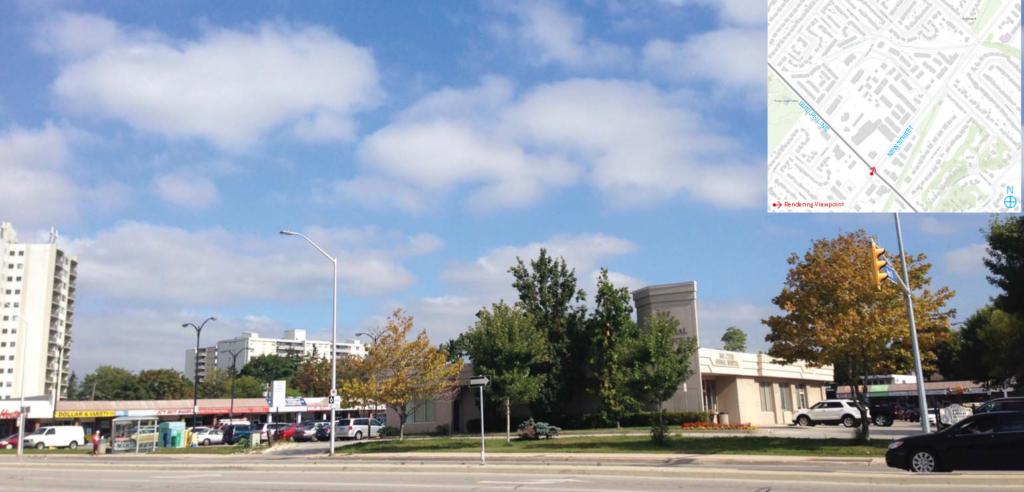 The plaza at New Street and Guelph Line – as it looks today. The planners think there is much more potential for the site and suggest some possibilities. 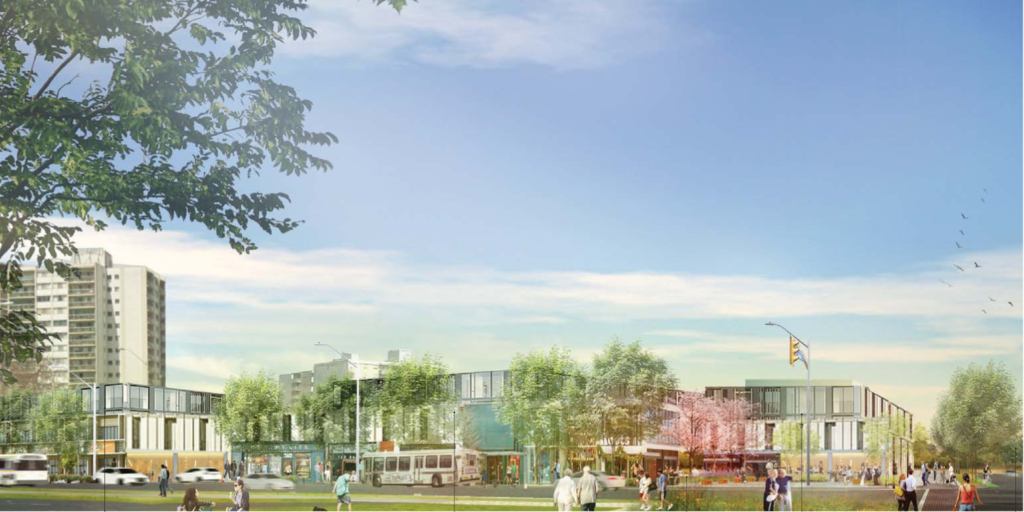 Possible intensification for the plaza at New and Guelph Line – all this could be done within the existing zoning and Official Plan. 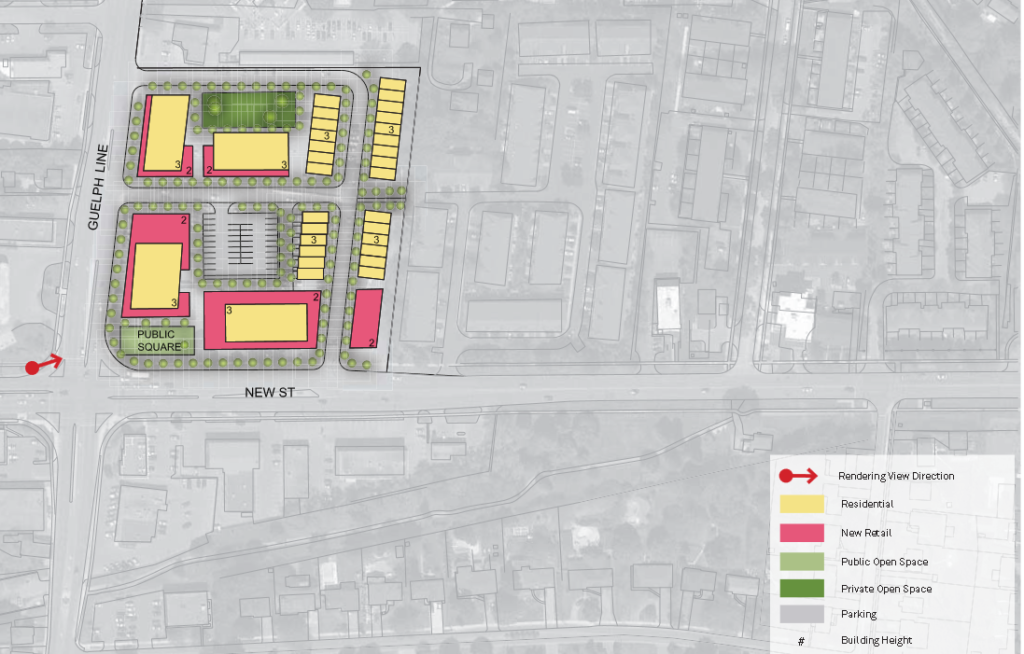 The planners suggest what could be built on the plaza at Guelph Line and New street. We are absolutely blessed to have a Great Lake at our doorstep, an escarpment in our back yard and a protected Greenbelt arching through our region. Within minutes, we can enjoy a long, sandy beach, kilometres of trail in acres of forest, breath-taking views over the lake, and quaint villages to visit tucked in amongst farmland where you can pick fresh fruit or buy local honey.
Whether you prefer to travel by car, bike or on foot, there is so much within easy access, and a lot of it accessible by public transit as well. Where else can you find this?!
The Burlington I foresee, builds upon what it has already built. It doesn’t mean destroying existing neighbourhoods, nor the trees that make them so special. Leave the lovely homes for families to raise their children, so they can ride their bikes, play street hockey or where folks can walk their dogs through leafy neighbourhoods. On the perimeters of those neighbourhoods, where main arteries intersect and small businesses tend to locate, add mid to high density housing and create a commercial/transit/residential hub to accommodate the seniors and the singles who do not rely on automobile transportation.
The intersection of Guelph Line and New Street is a good example. There are businesses, behind them there are apartment buildings, behind them some town homes and then tucked behind them, detached homes. Such variety of accommodation offers many more options for people, depending on what stage of life they are going through
The Roseland Plaza, and several others like it, would do well to re-invent themselves, with fewer parking spaces and more frequent smaller buses bringing seniors right up to the pharmacy to get their prescriptions, to the barber shop for a haircut or the coffee shop to meet their pals, rather than trying to make their way in from the street across a dangerous (and in winter, slippery) parking lot. Good public transit plays a big part in convincing people to leave the car at home.
It is unsettling to see existing homes/buildings torn down, such as we are witnessing at the New St Maranatha development. Holes in the ground, gaping spaces, and altered vistas can be unfamiliar and disorienting. Yet in time, as people move into these new sites, trees grow in, gardens are planted and familiar faces come and go, the starkness of it all softens and the architecture and nature blend to form a very liveable landscape for our seniors, our children and our pets.
 Carol Gottlob has been a candidate for public office (ward 4) and is a member of the Burlington Green board. She teaches English as a second Language to new Canadians. Carol Gottlob has been a candidate for public office (ward 4) and is a member of the Burlington Green board. She teaches English as a second Language to new Canadians.

 By Ray Rivers By Ray Rivers
July 1, 2016
BURLINGTON, ON
Brexit was a simple referendum question – leave or remain. But dumbing down the referendum question doesn’t make the answer any better. Leaving the European Union is a complicated matter involving trade and other economic considerations as well as a broad swath of social issues, including immigration and settlement policy. Is it little wonder that the voters were confused.
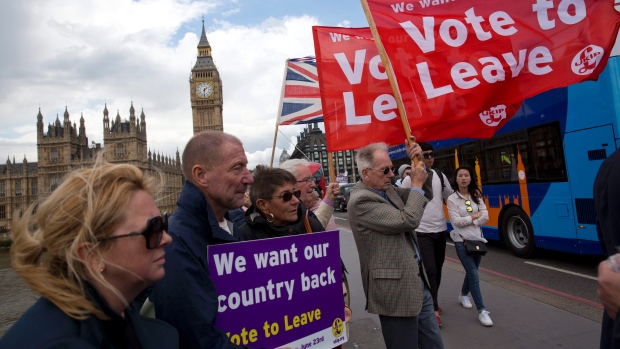 They did get their country back – not much left to work with. Media reports indicated that some Leave voters confessed to regretting their decision as early as the morning after. The truth is that many voters were understandably ignorant of what they were actually voting for, as evidenced by the stampede to a google search for EU. Pity you say – a bit late for voters to struggle trying to figure what the EU actually stands for, after having just voted to leave it. Britain was only part of the EU since the 1970’s after all.
Churchill is reported to have once said that the best argument against democracy is a five minute conversation with the average voter. And this mess is exactly what we should expect when we overlay an ad hoc exercise in direct democracy on top of our normal representative system of governance. So why not make sure that our indirect democracy is as representative as possible.
After all we elect and give license to our MPs to make these complicated decisions so we don’t have to get into the weeds – it’s not our job. And Brexit is about as weedy as it gets. But like Canada, Britain is stuck with an outdated first-past-the-post electoral system. Given voting splits among various parties, the governing Conservatives there came up the middle and were elected by just over a third (36.9%) of the electors.
Canada has had its fair share of grief over referenda in the past. Who could ever forget Mulroney’s divisive Charlottetown Accord. Then there were the two Quebexit plebiscites, the second one coming within a hair off creating a Brexit-like crisis.
 The referendum on Quebec leaving confederation was a very close vote. Imagine if they had won? Had Quebec voted to leave, would aboriginal communities have demanded separation from Quebec, as the Scots may now do? Or what about those English-speaking parts of Montreal and Hull, across the river from Ottawa and dependent on national capital for its livelihood? One might argue that we escaped only through plain luck. But unlike Cameron who had no contingency process, Jacques Parizeau had a secret exit plan. His morning-after involved nationalizing military bases located on Quebec soil.
In the last federal election Justin Trudeau campaigned on electoral reform in order to make our democracy more representative. The loyal opposition is now demanding a referendum to seal any kind of deal on electoral reform. Mostly that is pure survival instinct on their part. Almost any kind of change will make the Tory’s lot in life less favourable – reduce their chances of ever forming government – unless they broaden their appeal beyond the stereotypical right-wing voter.
So the Conservatives are putting their eggs into the referendum basket, having watched the earlier electoral reform campaigns in Ontario and B.C. go down in flames. Still they are part of a parliamentary committee looking at options. One option, some sort of proportional representation, would entail reconfiguring our parliamentary chambers and most likely require a constitutional amendment. Fortunately Canada has a comprehensive constitutional amending formula, arguably superior to any national plebiscite.
And of course representation could be improved, were elected candidates to command the support of a majority of voters, as a first, second or third choice. This kind of change, use of a ranked or preferential balloting process, also referred to as a single transferable vote, would involve a relatively simple modification to ballot counting. In fact ranked ballots are what Ontario has invited municipalities to adopt for their next local elections – without any requirement for a referendum.
New Zealand is a case study for a parliamentary democracy which has also institutionalized some measure of direct democracy. Of course it is a small country with its own ethnic and economic diversity, but on the whole is arguably more homogenous than Canada. That argues for New Zealand as a place to pilot the complementary use of direct democracy. This nation of about four million people introduced its own mixed-member proportional representation system following an overwhelmingly positive referendum, and continuance of that system was confirmed by another.
In fact New Zealand has developed a referendum law and process to guide it. But even a New Zealander might eventually find referenda problematic. For example, thanks to their direct democracy going awry, they totally blew their search for a new flag and are now stuck with the old Australian-looking one.
 Getting this flag was not an easy decision. Contrast that to how Lester Pearson managed to bring in Canada’s new flag while operating with only a minority government. And recall how Kim Campbell defused the abortion debate in this country without any referendum at all. As we celebrate Canada Day today, let us recall that we didn’t need a referendum to adopt a new flag, to re-write our national anthem, to repatriate our constitution, to enter into free trade agreements and a host of other things we entrust to our elected representatives. And they could and will better represent us before long.

Ray Rivers is an economist and author who writes weekly on federal and provincial issues, applying his 25 years of involvement with federal and provincial ministries. Rivers’ involvement in city matters led to his appointment as founding chair of Burlington’s Sustainable Development Committee. He was also a candidate in the 1995 provincial election
Background links:
Scottish Independence – EU Google Search – Electoral Reform –
More Brexit – New Zealand Voting – First Past the Post – Single Transferable Vote –
Proportional Representation – BC Referendum – Electoral Reform – NZ Flag –

 By Ray Rivers By Ray Rivers
June 24th, 2016
BURLINGTON, ON
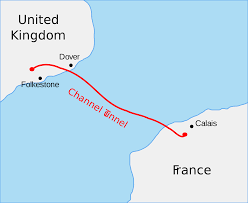 The Chanel- the history it has experienced. Now more than a body of water – a divide. The United Kingdom (UK) has just voted decisively to leave the European Economic Community (EEC) and European Union (EU), which it had first joined in 1973. The Common Market, as it was also called, was founded in 1957 in part to propel the still broken post war economies and to avoid emerging conflicts among the original six nations in the Treaty of Rome.
Two years later (1975) Britain’s membership was confirmed overwhelmingly by a referendum to resolve forever Britain’s place in Europe. UK Independence Party leader, and Brexit champion, Nigel Farage was eleven years old at the time of the referendum. And Prime Minister David Cameron, who has just announced his resignation and that of his government, was two years younger. Forever can look like a long time when you are nine.
Cameron had been generally well regarded by almost everyone, winning a respectable majority in the last British election. But he misjudged how his country felt about British sovereignty and its adherence to key EU principles. So in true Shakespearean fashion he has now fallen on his sword for this most serious error in judgement – the referendum. Brexit, as it was called, should be a lesson to all who think that administering simple polls on complicated and strategic matters to the great unwashed is the answer to anything.
British politicians of all stripes are speaking softly, urging calm, and claiming it will take years for the Brexit to take effect. But that is not how the rest of the EU see it. They have demanded a quick exit in the interests of economic and political stability for what remains of their union. That after all was the primary raison d’être for the creation of the EU.
One should always be careful of that which one wishes. Big change can be chaotic and chaos creates its own consequences. So even before the results were complete the world witnessed one of the most stable global currencies, the British pound, crash to lows not seen since 1985. The next day financial giant Morgan Stanley claimed it was heading to a safe landing on the mainland, deserting London as the former banker for the EU.
Pro-EU Scotland, in union with England since the 1600’s, is mulling a redo of its own independence referendum in order to stay in the EU. Northern Ireland is being courted to join its southern EU cousin in the main republic, something considered unthinkable only a decade ago. And now Spain is demanding a governing stake in Gibraltar. Oh what a difference a day makes as that proverbial sun sinks even further on the vestiges of a once great Britain.
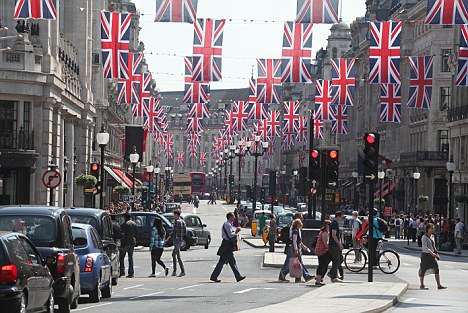 The Union flag flying in Regent street. No longer so united but still a kingdom, albeit with a potentially much simpler Union Jack. Without North Sea Oil, Irish and Scotch whiskey, and no place to vacation, the lonely English will have to content themselves with gin and tonics in Blackpool or Brighton. Even Pimms #1 is now owned by the bleedin’ Europeans. Seriously, overnight the UK economy fell from 5th to 6th place in global standing, ironically sucking up to the derrière of former arch rival, France.
Immigration was a significant part of the discussion for most Britons, notwithstanding that Cameron had wrung exceptional, and unexpected, immigration control concessions from other EU leaders. Brits will likely see an exodus of continentals, including a million or so Polish nationals vacating recessionary England for jobs back home in one of the fastest growing EU economies. And that may in some measure be balanced by the return of at least some of the Brit expats living in places like Spain and France and all those tourists now lacking an EU passport.
Canada and the US will be impacted in a number of ways. For example, there was the process of finalizing free-trade agreements with the EU, championed to a large part by the Brits, despite strong objections by Germany and others. But the UK will still be a major player in NATO, though joint military procurement is likely to suffer as the EU finally moves its much promised common defence policy to the next level.
One foot in and one out, best described the UK approach to the EU anyway. Britain wanted the benefits of the marriage but refused to get completely naked and under the covers with its bed mates. She lacked commitment to the marriage, retaining her historical trappings as a way of maintaining her distance – the pound, rules of the road, gallons and miles and so on. And there has always been a measure of upper-nose smugness, that the ‘old chaps’ are better bred and come from superior homes than those dingy quarrelsome continentals.
But rejection is the toughest part of any in a relationship. And England has just told her continental suitors to powder off, spurning their interest, consideration, tolerance, warmth and even love – turning 19 nautical miles into an ocean away. The European reaction is really yet to come, but I’d bet on a hefty dose of tough love. To paraphrase the distinguished17th English playwright, William Congreve – hell hath no fury like a partner spurned.

Ray Rivers is an economist and author who writes weekly on federal and provincial issues, applying his 25 years of involvement with federal and provincial ministries. Rivers’ involvement in city matters led to his appointment as founding chair of Burlington’s Sustainable Development Committee. He was also a candidate in the 1995 provincial election
Background links
Hell hath no Fury
Previous Referendum-
Common Market –
Scottish Referendum –
England and Scotland Act –
Implication for Brit tourists –

|
|
 By Ray Rivers
By Ray Rivers



 Ray Rivers is an economist and author who writes weekly on federal and provincial issues, applying his 25 years of involvement with federal and provincial ministries. Rivers’ involvement in city matters led to his appointment as founding chair of Burlington’s Sustainable Development Committee. He was also a candidate in the 1995 provincial election
Ray Rivers is an economist and author who writes weekly on federal and provincial issues, applying his 25 years of involvement with federal and provincial ministries. Rivers’ involvement in city matters led to his appointment as founding chair of Burlington’s Sustainable Development Committee. He was also a candidate in the 1995 provincial election














 The following is a summary of the “New Directions” city council debated last week. The document in front of them was a draft that was received and filed. It will come back to city council in November, once the team putting the new transportation plan together has had a chance to absorb what council had to say during the three hour meeting.
The following is a summary of the “New Directions” city council debated last week. The document in front of them was a draft that was received and filed. It will come back to city council in November, once the team putting the new transportation plan together has had a chance to absorb what council had to say during the three hour meeting. 2 – Rethink Streets
2 – Rethink Streets



 Joan Little is a member of the Niagara Escarpment Commission. Previous to her current appointment she was a commissioner from 1986 to 1993, and chair from 1993 to1996. She was a member of Burlington Council and Halton Regional Council between 1974 and 1988, and an active board member of Conservation Halton from 1976 to 1995. Following her council retirement she served on the Joseph Brant Memorial Hospital Board, which she left in 1993 to assume the Chair of the NEC. She is a regular freelance columnist on Burlington/Halton issues in the Hamilton Spectator.
Joan Little is a member of the Niagara Escarpment Commission. Previous to her current appointment she was a commissioner from 1986 to 1993, and chair from 1993 to1996. She was a member of Burlington Council and Halton Regional Council between 1974 and 1988, and an active board member of Conservation Halton from 1976 to 1995. Following her council retirement she served on the Joseph Brant Memorial Hospital Board, which she left in 1993 to assume the Chair of the NEC. She is a regular freelance columnist on Burlington/Halton issues in the Hamilton Spectator.


 Ray Rivers is an economist and author who writes weekly on federal and provincial issues, applying his 25 years of involvement with federal and provincial ministries. Rivers’ involvement in city matters led to his appointment as founding chair of Burlington’s Sustainable Development Committee. He has been a candidate in a past provincial election.
Ray Rivers is an economist and author who writes weekly on federal and provincial issues, applying his 25 years of involvement with federal and provincial ministries. Rivers’ involvement in city matters led to his appointment as founding chair of Burlington’s Sustainable Development Committee. He has been a candidate in a past provincial election.







 Loblaws was on the list. Fortinos is a part of the Loblaws operation – just a different brand name. We wanted to know if Fortinos would be selling wine and we asked this question:
Loblaws was on the list. Fortinos is a part of the Loblaws operation – just a different brand name. We wanted to know if Fortinos would be selling wine and we asked this question: Well it turns out it isn’t quite that simple. When we asked for a little more in the way of detail here is what we got back.
Well it turns out it isn’t quite that simple. When we asked for a little more in the way of detail here is what we got back.




 By Jay Fallis
By Jay Fallis

 Jay Fallis is a graduate of the University of Toronto where he earned a Master’s Degree that focused on electoral reform.
Jay Fallis is a graduate of the University of Toronto where he earned a Master’s Degree that focused on electoral reform.














 Donald Trump cleaned-up in the Republican nomination race by simply being himself. His victory was more of a fluke than a deliberate strategy. He just plumbed for and echoed the deepest, darkest recesses of the worst of America, and spewed racism, homophobia and insults as no American politician had done before. The more outlandish his comments, the more he gained notoriety and support among disciples who mistook his words of prejudice for plain-speaking. He was/is different and exciting. But what makes him dangerous is his lack of detail – what he actually would do.
Donald Trump cleaned-up in the Republican nomination race by simply being himself. His victory was more of a fluke than a deliberate strategy. He just plumbed for and echoed the deepest, darkest recesses of the worst of America, and spewed racism, homophobia and insults as no American politician had done before. The more outlandish his comments, the more he gained notoriety and support among disciples who mistook his words of prejudice for plain-speaking. He was/is different and exciting. But what makes him dangerous is his lack of detail – what he actually would do.
 Tom Harris is executive director of the Ottawa-based International Climate Science Coalition. Dr. Tim Ball is an environmental consultant and former climatology professor at the University of Winnipeg in Manitoba.
Tom Harris is executive director of the Ottawa-based International Climate Science Coalition. Dr. Tim Ball is an environmental consultant and former climatology professor at the University of Winnipeg in Manitoba.













 Carol Gottlob has been a candidate for public office (ward 4) and is a member of the Burlington Green board. She teaches English as a second Language to new Canadians.
Carol Gottlob has been a candidate for public office (ward 4) and is a member of the Burlington Green board. She teaches English as a second Language to new Canadians.






